#which makes the complete absence of any black characters in this episode a major red flag. but Ed's character isn't presented as the
Explore tagged Tumblr posts
Text
WandaVision: ‘Subverting’ Good Television - Quill’s Scribbles
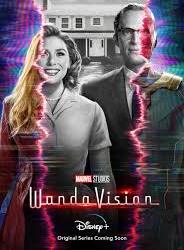
(Spoilers for the first five episodes)
Hey everyone! Well... it’s been a while, hasn’t it? The last time I wrote a proper review or Scribble, people still thought the COVID crisis would be over within a month. The poor saps. But I thought that as a special way to mark this year’s Valentines Day, we could take a closer look at the Marvel Cinematic Universe’s shittiest power couple in their new Disney+ show WandaVision.
The first of many MCU spin-off shows that nobody asked for, broadcast exclusively on Disney’s totally unnecessary streaming platform, WandaVision is about everybody’s favourite whitewashed Nazi experiment and her red sexbot boyfriend as they try to fit into a suburban sitcom neighbourhood without arousing suspicion.
Yes, you read that correctly. The MCU has a sitcom now. My life is now complete.
Sarcasm aside, I was legitimately curious about WandaVision because of its unusual setting. And considering one of my most common criticisms of the MCU is its total lack of creativity, anything that’s even a little bit subversive is bound to attract my attention. Of course ‘subversive’ doesn’t necessarily mean ‘good.’ I could hand you a canvas smeared with my own shit and call it subversive. That doesn’t necessarily make it good art. And that’s exactly what WandaVision is. A canvas smeared with shit.
So lets split this critical analysis/review/angry bitter rant into two distinct chapters. The first focusing on the plot and setting, and the second focusing on the characters. Okay? Okay.

Chapter 1: Bewitched
Critics seem to be utterly enamoured with the whole sitcom gimmick, and it is a gimmick. As far as I can tell from the episodes I’ve seen, the sitcom setting serves no real purpose whatsoever other than to make the show ‘quirky.’ Which I wouldn’t mind, believe it or not, if the show was actually funny. There’s just one problem. It’s not.
Now in some ways describing why a sitcom doesn’t work is often futile because comedy is largely subjective. What I find funny, you won’t necessarily find funny and vice versa. With WandaVision, however, I won’t have that problem. I can demonstrate to you precisely why WandaVision, objectively, isn’t funny. And it all comes down to one simple thing. The stakes. Or rather the complete and total absence of stakes.
The show makes it very clear from the beginning that none of what we’re seeing is real. The cheesy theme song, the era appropriate special effects (mostly. It’s actually very inconsistent), the joke commercials, and, in the case of the first two episodes, which are in black and white, the appearance of red lights and objects in Scarlet Witch’s general vicinity. (Gee, what a mystery this is).
Basically Wanda has brought Vision back from the dead and created this sitcom world for them to inhabit. I’ll explain the stupidity of this in Chapter 2. The point is none of this is real, and that has a negative effect on the comedy because the very nature of comedy is suffering. Take the plot of the first episode. Wanda and Vision have to prepare a dinner to impress Vision’s boss. If they fail, Vision could lose his job and the couple could be exposed as superheroes. If this were a normal sitcom, it would work. The stakes are clear and it would be satisfying to see the two struggle and overcome the odds. But here, we know it’s not real. If it’s not real, it means there’s no stakes. If there’s no stakes, it means there’s no suffering. If there’s no suffering, there’s no comedy.
It would be one thing if the unfunny sitcom stuff lasted for like the first ten minutes or so before making way for the actual plot, but it doesn’t. Oh no. It doesn’t even last for the first episode. Out of the five episodes I’ve watched, four of them are almost entirely about these unfunny, objectively flawed sitcom homages, each set in a different time period. The fifties, the sixties, and so on. And what’s worse is that nothing that happens in them is plot-relevant. That gets relegated to the last five minutes of an episode. So you’re forced to sit through twenty five minutes of boring slapstick and puns in order to catch even a whiff of actual story. Which begs the question... who is this for exactly? It can’t be entertaining to Marvel fans, who have to slog through all this pointless shit so they can figure out what the fuck is going on. Comedy fans may get a kick out of the sitcom pastiche at first, but after four episodes, surely the joke would wear thin. So why is it in here? Clearly someone in the writer’s room absolutely fell in love with the idea of doing a Marvel sitcom, but nobody put in any time or effort to figure out how it would work in context.

I cannot stress enough how bad the plotting of this series is. As I said, the vast majority of a thirty minute episode is about shitty sitcom plots that aren’t funny and don’t have any impact on the story, only to then tease you with a crumb of actual plot in order to keep you coming back for the next instalment. Admittedly it’s an effective strategy. I was more than ready to quit after Episode 2 until that beekeeper showed up out of the sewer (don’t ask. It’s not important). WandaVision essentially follows the Steven Moffat school of bad writing. String your audience along with the promise that things might get more interesting later on and that all the bullshit that came before will retroactively make sense by the end. Except, as demonstrated with BBC’s Sherlock, that doesn’t work. And even if it did, it wouldn’t justify wasting the audience’s fucking time. And that’s what the majority of WandaVision is. A waste of time.
The only episode that doesn’t follow the sitcom format is the fourth episode. Instead it basically exists to explain all the shit that happened before. The shit that the audience, frankly, are smart enough to figure out for themselves. Wanda created the sitcom world as a way of coping with the loss of Vision, blah, blah, blah. Yeah, we got it. Thanks. It doesn’t advance the plot or anything. It’s just a massive info-dump. But by far the lowest point was when Darcy (by far the most annoying character in the first Thor film and is just as obnoxious here) was sat in front of the TV, watching the sitcom and asking the same questions we were. Not even attempting to look for answers. Just reiterating what the audience is thinking. Like this is an episode of fucking Gogglebox.
In the end it becomes apparent why the series is structured the way that it is. It’s to hoodwink people into subscribing to Disney’s stupid streaming service. If you think about it, there was no reason for WandaVision to be a TV series other than to lure gullible fans in with a piece-meal story buried in a mountain of crap. This isn’t a TV show. It’s what is cynically known in the world of big business executives as ‘content.’ They’re not interested in entertaining the audience. Instead they crave ‘engagement’, which isn’t the same thing. Watching WandaVision is like staring into the void, waiting for something to happen, while Disney charge you for the privilege.
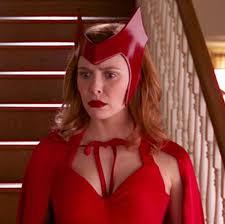
Chapter 2: I Love Lucy
So the plot sucks balls. What about the characters? Surely if Wanda and Vision are likeable at least, it’ll give us something to cling onto.
Well as I was watching the first episode, it suddenly hit me that I couldn’t remember anything that happened to them in previous films. I knew Vision died, but other than that, I couldn’t tell you significant plot details or their personalities or anything. Not a great start.
See, up until now, Vision and Scarlet Witch have been little more than background characters. So already there’s an uphill struggle to get us invested in their relationship, especially considering we haven’t actually seen that relationship develop. In Avengers: Age Of Ultron, Scarlet Witch is killing people because she’s pissed off about Tony Stark killing people (you work that one out) until all of a sudden she stops and joins the good guys because the script said so. Vision meanwhile is introduced as a convenient deus ex machina to beat Ultron and gets no real personality other than he’s a robot. Captain America: Civil War comes the closest to giving Wanda a story and personality of her own as it’s her actions that cause the Sokovia Accords to come into effect, but she never gets any real growth or payoff as the film is heavily focused on Cap and Iron Man’s penis measuring contest. And as for Vision, all he does in the film is accidentally cripple War Machine. No real character or arc there as such. And then we have Avengers: Infinity War, where Wanda and Vision are now sporadically in love and on the run until that pesky Josh Brolin, looking like a CGI cross between Joss Whedon and a grumpy grape, comes along and rips out Vision’s Infinity Stone to power up his golden glove of doom, and the film treats this like a tragic moment, except... it isn’t. Because we haven’t really had the time to properly get to know these characters and see their romance blossom. So instead it just comes off as hollow and forced.
WandaVision has the exact same problem. Apparently Wanda was so distraught about Vision’s death that she broke into a SWORD base, stole his corpse, brought it back from the dead... somehow, and then enslaved an entire town of people to create an idyllic lifestyle for her and her hubby while broadcasting it as a sitcom to the outside world... for some reason. Putting aside the dubious morality of it all, it’s impossible to really sympathise with Wanda or her supposed grief because we’ve barely spent any time with her. Had the Marvel movies taken the time to properly explore the characters and show us their relationship grow and develop, this might have had more emotional resonance. But no, it just happens. In one film they barely speak to each other and in the next they’re a couple. No effort to explore how they feel about each other or any of the problems that may arise trying to date a robot. It just happens and we’re just supposed to care. Well I’m sorry, but I don’t care. You’re going to have to try a little bit harder than that I’m afraid. What’s worse is that, thanks to the whole fake sitcom thing, it’s impossible to really become invested in Wanda and her plight because the show has to constantly keep us at arms length at all times in order to keep up the pretence that this bullshit is somehow mysterious.
Looking through the WandaVision tag, it amuses me how many people say that she’s acting out of character. And yeah, her actions are a bit of a head scratcher. Why would an Eastern European’s ideal life be an American sitcom? Why a sitcom? Why kidnap an entire town? Why keep changing the decade? None of it makes sense, but you’re wrong for thinking that Wanda is behaving out of character for the simple reason that Wanda has never actually had a character. In fact, ironically, Wanda mind controlling an entire town and forcing them to do her bidding is probably the one consistent thing about her as she did this in Age Of Ultron. In interviews, Elizabeth Olsen and Paul Bettany described how they used actors like Elizabeth Montgomery and Dick Van Dyke as influences, which is really funny because they’re straight up admitting they don’t have characters and even now they’re still not playing the characters, instead emulating the work of far better actors.
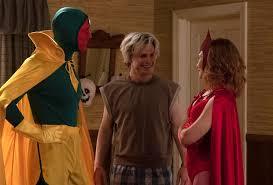
As I was watching the show, it became abundantly clear that not only do Marvel not have the faintest idea what they wanted to do with these characters, but they also straight up don’t give a shit about these characters. Wanda in particular has had a rough time under the tyrannical regime of the House of Mouse. First they cast Elizabeth Olsen, a white woman, to play a Romani character, then systematically erasing her Jewish roots, even going so far as to put a cross in her bedroom in Civil War, and now the character is being butchered even more by forcing her into an American sitcom housewife role that she apparently willingly chose for herself, which is laughable. I mean say what you like about Magneto in the X-Men films, at least they actually depicted his Jewish culture. At least they recognised his Jewish background was important (though not important enough to cast a Jewish actor apparently). Wanda’s steady cultural erasure over the years is incredibly insidious and judging by Olsen’s comments in interviews, where she called Wanda’s comic book outfit a quote ‘gypsy thing’ unquote, it seems nobody has an ounce of fucking respect for the character or the culture she’s supposed to be representing. (and to all those kissing her arse saying it was a slip of the tongue, she has been repeatedly called out for using the slur in the past, so at this point I’d describe her behaviour as wilful ignorance)
If you want further proof of how much Marvel doesn’t seem to care about Wanda, look no further than her brother Pietro, aka Quicksilver. At the end of Episode 5, Wanda brings Pietro back from the dead, except it’s not Pietro. It’s Peter Maximoff, the Quicksilver from the X-Men films played by Peter Evans, who coincidentally is not Jewish or Romani either. So Quicksilver has the dubious honour of not only being whitewashed three times, but also twice within the same franchise. But should we really be surprised at this point? It’s Marvel after all. The same company that whitewashed the Ancient One in Doctor Yellowface and claimed it wasn’t racist because Tilda Swinton is ‘Celtic’. But now I’m going off topic. My point is that this isn’t a simple case of recasting an actor like Mark Ruffalo replacing Edward Norton as the Hulk. WandaVision actually acknowledges the recast in-universe, which makes no sense. Why would Wanda bring back her brother, only to make him look like a different person? We the audience may be familiar with this version of Quicksilver, but she isn’t. That would be like me bringing my Grandad back to life and making him look like Ian McKellen. He’d be perfectly charming, I’m sure, but he wouldn’t be my Grandad.
If Marvel really cared about the characters or narrative consistency, they would have brought Aaron Taylor Johnson back. Instead, now they have absorbed 20th Century Fox into the hellish Disney abyss, they use X-Men’s Quicksilver as a means to keep viewers from switching off and so that people will write stupid articles and think pieces about whether the rest of the X-Men will show up in the MCU. It’s like dangling your keys in front of a toddler’s face to distract them from the rotting corpse of a raccoon lying face down in the corner of the room.
And it’s here where I decided to stop watching the show because fuck Disney.
Epilogue: One Foot In The Grave
You know, I am sick and tired of the so called ‘professional’ critics bending over backwards to praise these god awful films and shows when it’s so clear to anyone with a functioning brain cell how bad they truly are. WandaVision is without a doubt one of the most cynically produced and poorly structured TV shows I’ve ever seen. Its riffs on classic sitcoms are pointless and self-indulgent, the writing is terrible, the characters are unlikable and unsympathetic, and it’s entirely emblematic of what the entire MCU has become of late. And it’s only going to get worse as Disney drowns us with more ‘content’ to keep the plebs ‘engaged’. In short; pathetic.
189 notes
·
View notes
Photo

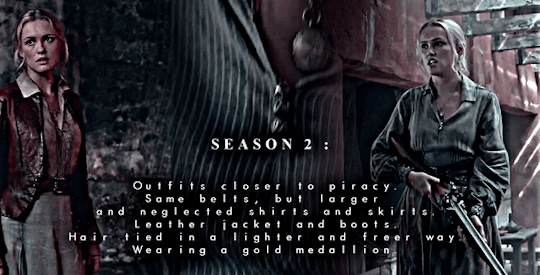
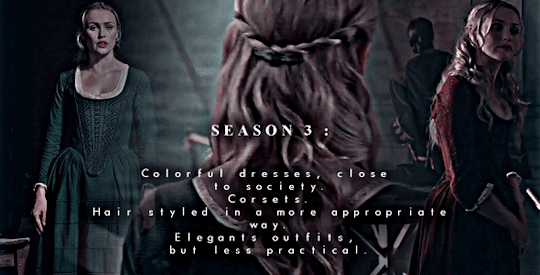
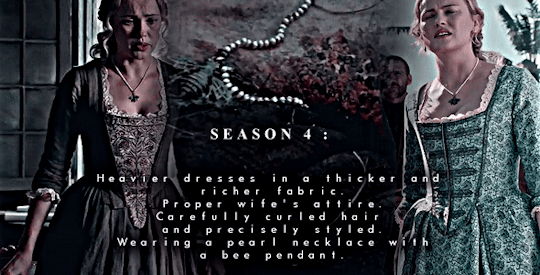
ELEANOR GUTHRIE, or her whole journey shown with her outfits :
*Note: This is a personal analysis and nothing is official. You are free to disagree with what I see, it’s just a personal opinion that I want to share.
It’s fascinating how we can see the whole evolution of the character of Eleanor just through her clothes over the seasons. I had fun watching very carefully everything she wore in each episode of each season and we can really see an evolution of mentality with each new wardrobe.
SEASON 1 : Businesswoman and spirit of rebellion.
Eleanor’s outfits in season 1 perfectly reflect her state of mind at the start of the show. The education that her father gave her via Mr. Scott was certainly rich, destined her for civilization, and marked her. At the same time, Eleanor grew up on an island where she finished her education among pirates. She is, at the start of the show, determined - like Flint - to create a semi-civilized Nassau, which would be somewhere between the security of civilization and the freedom that piracy offers. Her outfits reflect this state of mind divided between two worlds that she would like to see united.
She wears outfits that are both too elegant for pirates but too inappropriate for civilization. Her outfits also reflect the position of power she has over Nassau. She wears a lot of atypical and masculine things, like belts or ties. The fact that she wears her outfits also shows a certain spirit of rebellion towards the patriarchy of her time. She shows with her outfits that she considers herself the equal of men in terms of business because, with the power and the affairs that she conducts, she is indeed their equal.
In spite of that, it must have been difficult to earn their respect and even more to maintain it. We see in a scene of 1x02 with a merchant who refuses trade with her because she is not her father and who only agrees to sell his cargo to her after Vane threatens him. It is easy to think that she wears outfits with masculine touches to remind them that she is in power, that it is she who manages the trade within Nassau and also by simple rebellion against the oppression of men on her.
Despite this, Eleanor manages to retain some elegance and femininity to her clothing. She wears her hair rolled up in very elegant and tight buns, always accompanied by barrets or other hair accessories. This way of keeping her hair tied always had to be very practical given the heat that must reign on an island in the Caribbean. She wears a lot of jewelry, fine gold necklaces, small earrings, bracelets that sometimes look a little tribal (I like to imagine that these ones are gifts from Scott or Max, but she could surely acquire these by trading throughout the Caribbean), as well as some old pendants and rings typical of this era.
She also happens to wear stockings, although these stockings are special for this time. The only time we see them is when she sleeps with Vane, and they are black, very fine and sexy, which is not at all typical of the stockings of this era. I like to think that the black of these stockings is linked to the black of piracy and that attractive nature of these stockings is still linked to a rebellious spirit since it would be inappropriate for a woman of civilization to wear stockings like that but in Nassau? Nobody cares.
Her boots are generally elegant and refined too, although they remain practical boots. She wears many tight waistcoats, sometimes leather, sometimes fabric, always accompanied by light blouses. She only wears skirts, generally wide, which does not bother her to move quickly. She wears relatively pale colors, ranging from gray to brown, passing through light purple, or beige, except for her final outfit, which is of a dark burgundy and which is her most colorful outfit of all the season. Her most notable accessory is also, of course, the bunch of keys that she always wears attached to her belt. This set of keys from Nassau, which alone represents all the power she has on this island in this season. We can see a little of this outfit being some kind of victory outfit. At the end of the season, Eleanor finally has everything she always wanted, independence from her father and Nassau belonging entirely to her, with a new business that is entirely controlled by her and only by her.
SEASON 2 : Piracy and the beginning of the problems.
Eleanor’s outfits in Season 2 say something quite different. She keeps some things similar to what she wears in season 1, her large white or beige shirts, belts and the keys that are still so representative. But there is a lot of noticeable change and the biggest change we can see is that her outfits are much closer to pirate outfits. She already has a lot less color than before. Knowing that black is the absence of color and refers to piracy (I am thinking here of the absence of color on pirate flags), it’s surely is not a coincidence that her outfits are suddenly darker. She almost wears only brown, beige, gray, black, and sometimes a rare dark green, and this applies as much to her skirts as to her shirts. The most notable element is that she no longer wears any of her waistcoats that looked elegant, instead, she has replaced them with a brown pirate-like leather jacket and reminds us of the jackets that we can see on Flint, Vane or Anne.
She also wears coarser, larger and less elegant boots. Her jewelry has also changed a lot, she only wears a necklace for the entire season, and it’s a gold medallion, which once again is very reminiscent of piracy, and only two types of earrings, one of which also recalls pirate coins (and her old rings). She still wears elegant buns a few times, especially for certain meetings at the tavern, but in the vast majority of the season, her hair is much more neglected. We see that she ties it quickly most of the time instead of spending time styling them and for good reason: she no longer has this free time for it. Taking full independence implies more responsibilities and we can see through the difficulties she has in running the consortium that she no longer has time for this kind of thing. She is too busy between the problems that Flint and Vane cause her in the season, as well as the danger that Ned Low represents for her.
It’s a season which brings her, on the aesthetic level, much more to piracy than her outfits in season 1. She favors more the practical side than elegance, it saves time and conveys that this is the season where Eleanor is the closest to piracy (aesthetically) that she’ll ever be. Her final outfit is also completely black, of course, it’s a mourning outfit for the death of her father but it may also represent Eleanor’s farewell to piracy, making her wear an entirely black outfit, the key color of piracy, for her last scenes in season 2.
SEASON 3 : Colors of England and prisoner.
Season 3 is, of course, the big visual and aesthetic change for Eleanor. She is on the other side now, on the side of civilization… but not yet entirely and we can feel it in her outfits. She starts the season with an outfit very similar to her last one of the end of season 2, a dark brown/black shirt and skirt, perhaps the same as the one she wore at this moment, and it’s her prisoner outfit. It’s perhaps a visual way of representing that right now, colors of piracy are a danger for Eleanor, since she is now on the lands of civilization, in the hands of the English.
Once onboard for Nassau, we can note one point: Eleanor lost everything after her arrest, her clothes are therefore provided by Rogers and by the English. We can thus note that her dresses are all the same, without accessories, jewels or flourishes. They are elegant and suitable for an English lady while remaining very simple because Eleanor remains a prisoner in this season.
The symbol in this season is more represented by the colors, which are much more vivid than the old outfits of Eleanor. It is quite interesting that Eleanor have three outfits which together form the colors of the English flag: a red dress, a blue dress and a light gray dress, almost white. I think almost all of her dresses have special meaning. The dark outfit of the beginning represents the new danger that piracy represents for Eleanor (knowing also that she have now many enemies among the pirates, much more than before since she has no more power over them). The light gray outfit from episode 3x03 can also represent a kind of transition outfit, it’s the outfit she wears arriving at Nassau, not a colorful outfit. Therefore recalling her past with piracy, we can further emphasize this link with one of the dresses she wears the most: the dark green dress.
This dress represents what remains of piracy in Eleanor. She always wears this dress at times reminiscent of her past with piracy. She wears it first when she tells Rogers that he does not know Nassau, unlike her, then again when she talks to him about her past with Vane and how she conquered Nassau. It is also an outfit that can be linked to Vane, because she wears it when he sees her on the deck, again when she learns of his return to Nassau, when she will face him in the fort and finally when she decides his fate with a discussion with Max. She also wears it when she faces Hornigold, which is also a part of her past. It is her dress which, with the two outfits of the beginning, has the least color, and which is therefore the most connected to piracy and to her past.
The blue dress may be related to Rogers. Blue is the color of purity, of hope, and Eleanor begins to be hopeful about civilization and Rogers towards the middle of the show when she decides to become Rogers’ mistress (since he is married, this is what she is in this season). It is also the moment when she wants to wash away the sins of her past concerning betrayal, and thus perhaps wanting to adopt a “pure” color, to show perhaps also, consciously or not, a false image of her to Rogers.
The red dress is, of course, the most linked to civilization. It’s simply the color of the English, the color of the soldiers, and she fits perfectly in the mass of English when she wears it, moreover, she wears it in the scene where she makes her comeback on the island and in the tavern, which is very significant. She arrives surrounded by English soldiers in red with herself in red in the middle of them, perfectly matched, a symbol that she is now part of civilization. She wears this outfit every time she appears outside with Rogers on Nassau (except when she picks him up after he fought with Vane), and above all, she wears it when she hangs Vane, symbol that she just definitely killed the pirate part in her (or trying, at least).
For details, we can note that she wears boots similar to what she wore in season 1, smaller and elegant. Her hair is almost always worn down, which we have never seen from her before, and she styles them in a more elegant and appropriate way for a woman. Although she can sometimes tie them quickly (she may be with the English, but it’s probably always as hot in Nassau). We notice that she wears stockings again in the sex scene with Rogers, but very different from the ones she wore with Vane. Here they are red or dark pink in color, thicker, in cotton. These are much more classic stockings for women of this era. And of course, she wears corsets.
The last thing you can notice is her final outfit: a new blue dress, which only increases my opinion that the blue dress is linked to Rogers and to this new, more “pure” image that Eleanor is trying to adopt. The dress is thicker and heavier than the others, with detailed patterns, which is very symbolic for season 4: this indicates the place that Eleanor will now adopt in the next season, the place of governor’s wife.
SEASON 4 : Governor’s wife and civilization.
Season 4 is the natural continuation of season 3 for the aesthetics and clothing of Eleanor. However, she is now the governor’s wife, which changes a few details. She always wears very civilized dresses, similar to what we see in season 3, but at the same time very different. We feel in her way of moving that the dresses are much heavier, that the fabric is somehow of better quality. We can see that the patterns are much richer and more varied, which indicates more expensive dresses. Her position as governor’s wife means that she must wear outfits that indicate this position, as well that she is now a wife devoted to her husband.
She wears her hair tied in a way much more complicated than before, with very precise curls and even tighter styles. It’s probably the most complicated hairstyles that Eleanor has ever worn and which must be what takes up the most of her time. But as the governor’s wife, she must be well-dressed, and she certainly has a lot more time than she did before. Not to mention that she now has more or less a maid in the person of Mrs. Hudson.
Her outfits are very beautiful and rich, but nevertheless very impractical. We can notice in the scene of combat with the Spanish soldier that she still wears very traditional, pale stockings in cotton. She wears very few jewels, except two: her wedding ring, of course, but especially a pearl necklace with a bee pendant. No official explanation has been given about the bee pendant, but I see two possible interpretations, and one does not necessarily exclude the other. The first is that this pendant is connected to Vane, and by extension, to piracy, in reference to the nickname that Vane gave to Eleanor in the past and that we hear Jack pronounce once: “Lady Honeypot”.
It would be a nice gesture on the part of the costumers to show that, despite what she did to Vane and what she did to herself at this moment. (‘She doesn’t have a chance to really reflect on what she did to Vane, and what she was doing to herself, in that moment. I think she killed part of herself, in that act. Perhaps, in a way, that’s what killed her ability to achieve her end’ - Hannah New). By keeping something of him, she so keeps something pirate in her always (this whole theory was appreciated and approved by the actress on Twitter by the way).
The second interpretation is simply related to the popular term (especially in high school) of “queen bee”, which would be a symbol of her past power, recalling that she was once the “queen of thieves”. I visualize, in one way or another, this bee pendant as the last symbol of her past, of the power she had, the loves she lost.
We can also note an interesting detail: Eleanor only wears green in season 4. Metallic green for the first dress, water green for the second and more classic green for her final dress, another color reminiscent of the only dress which linked her to piracy in season 3. This could be the last link to her past, but I opt more so that this color actually connects her to Nassau, to the land that Nassau represents, this island for which she has fought all her life, and with which she died.
#blacksailsedit#black sails#eleanor guthrie#bsladies#ladiesofnassau#bseguthrie#bseleanor#hannah new#black sails meta#eleanorguthrieedit#coloring made by barbalas#made by me
248 notes
·
View notes
Text
Since no one cares about Alola I can therefore say what I want.
Team Rocket's Pokémon are all worthless toss. That's such a surprise from this oafish writing team.
Remember when Jessie and James had two each, to offer variety? Permitting them even that is too much focus nowadays.
We don't what anything interesting going on, thank you. Repetition is what we and they deserve.
Arbok, Weezing, Lickitung and Victreebel are spinning in their graves.
Stufful was missing for three years and she displayed not the slightest pang of concern until its belated invention. Given her temper she ought to have torn the island apart searching for her baby, but no.
Not bothered about Bewear. It shouldn't really be in this list as it didn't belong to them, although catching has no value anymore.
A bit thick are we? Or conforming to the usual parental standards?
Well, she's sufficiently neglectful that she let it out of her sight long enough for it to be crushed under a tree, then was too idle to come to the rescue. In consequence he was obliged to wait days until one of Lusamine's lackeys arrived.
She's 'Mama Bear' though, isn't she?
It's based on a red panda, is partly the colour of a black bear and as strong as a grizzly, but all that is a mere cover for its true nature as a Bear-Face Ham.
The modern pretence is that everyone's a vegetarian (are they balls), and Ursa Major lives on fruit, not, you know, flesh.
Just because it there's no hibernating in the tropics doesn't mean it can get by without a salmon now and again.
The name is stupid, since a red panda is not a bear. A play on words isn't clever if based on what it isn't.
They should've called her 'Pandamonia', or 'Pandour', which is a brutal soldier.
It is at least redeemed by battering the klepto cockroach into the next dimension. Good on 'er.
Mind you, this is Alola, a cesspit of incest, so it's probably some sick arrangement, like Bewear being slipped the length by that previously unmentioned Oakie-Dokie clone.
He's the spit of Jimmy Savile, thus every depravity is on the table.
Where's Stufful's dad? He buggered off too?
What kind of name is 'Stufful'? What's it made from, 'stifle' and 'suffocation'? 'Stuffed'?
Thanks for that. Whenever I see its ovine face I'm reminded of taxidermy.
Were Ursa Minor and Bewear described as mother and son, or were they 'friends'?
A series of games involving breeding and the 'anime' is too squeamish to even imply animals live in families.
I don't care either way for Stufful, but I'd like it better if its mouth wasn't a camel toe.
I understand it's a sea creature, and the contents of the oceans are their own brand of peculiarity, but looks like a limbless, undead spaniel plagued with extra teats. Its 'ears' resemble distended mammeries.
Hey, remember that interesting, original Pokémon James had called Victreebel? Let's do it again! And again! AND AGAIN!
Victreebel is a venus fly trap: an anomaly in nature as a carnivorous plant. It makes sense that the Pokémon version would be a bit more full-on in catching a meal.
New law: Team Rocket are required to collect monsters as ugly as themselves.
Hurting James was its personality quirk, particularly to it, fitting its nature, its 'thing'. It was never meant as a template for most of what he caught in the future.
Something is funny if it happens once, and can be now and again if done with a least a little flair.
Nothing repeated as a constant leaden thud is remotely amusing, but this is an unknown fact to Nintendo bone heads. They think certain events are utterly hilarious in themselves and require no finesse in application.
They have a checklist of moments obligatory to each episode, which explains the plodding lifelessness. Tick 'em off to keep the fans from being ticked off. All we supposedly care about is each gong struck, not how we got there.
At least Victreebel used to vary its behaviour:
Occasionally it even did as told without any chomping preamble.
It didn't do the exact same action every single time it was involved!
Mostly it swallowed James.
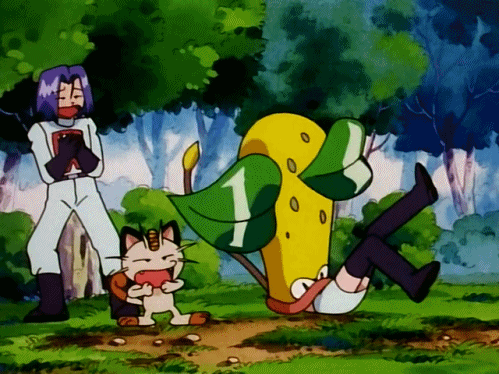
How long was it once Victreebel was chucked out on its leafy arse before Cacnea arrived?
Oh look, it's a Grass Pokémon and attacks James!
Sometimes it ate Jessie.
Carnivine got in on the action before Cacnea's run was even up: kick 'em when they're down why don't yer?
Oh look, it's a Grass Pokémon and attacks James!
Now we have Mareanie. Wasn't there a few in between? No, shush, they don't exist anymore.
Every bloody time it came out, it turned round and punctured him.
Every bloody time.
Ah, it's not a Grass Pokémon. That makes it totally new!
Oh yes, it's the complete opposite of Victreebel. It's Poison instead. Not like it at all.
Every bloody time it came out, it'd gnaw his head off.
Every bloody time.
That's endearing.
Oh but it is! It's just showing him love!
As that makes it alright!
If a muscular man squeezed his girlfriend so tightly he cracked her ribs, is that 'sweet' because he 'meant well' but his feelings overwhelmed him? Or is it A.B.H.?
Every bloody time it comes out, it injects James's head with toxin until it swells up into purple pustule of disease.
Every bloody time.
I never took Victreebel's assault as affection. To me they were real attempts to devour James, especially with the accompanying frenzied screech. Interpreting that as a positive emotion is bizarre to me.
At soon as James found it wedged in a Breeding Centre cage and opened the door it grabbed him, which appeared to be Victreebel lashing out in anger for what'd happened in the intervening period.
What Mareanie does is worse than the other three put together. At least they delivered mere bite marks or pinpricks, but it infects James!
Whole episodes of this programme have involved a Pokémon falling foul of Poison Powder and being on the verge of death, with all done to preserve it until Ash hunted down the cure, but now it's a big laugh, apparently.
Not one character ever has the wits about them to carry an Antidote, otherwise the writers wouldn't be able to fall back on the tired old race-against-time scenario, which is no such thing as we know they won't die.
Is it likely that James is always going to end up picking a violent Pokémon, of all the individuals of a race, of all the lifeforms in the universe?
Aren't his allowed to come with their own personality, or is there a set pattern they must follow, and when caught they absorb it, for fear they might be memorable?
Mind you, it's interesting the reactions these abuses provoke:
Victreebel eats James: Aw, it's so kyewt!
Cacnea impales James: Aw, it's so kyewt!
Carnivine chews James: Aw, it's so kyewt!
Mareanie poisons James: Aw, it's so kyewt!
Meowth claws James: Aw, it's so kyewt!
Jessie beats James: Aw, it's so kyewt!
Jessibelle whips James: EEVUL BITCH!!!
Mimikyu should be opposed for breaking it's own world.
To us, Pikachu is the most famous Pokémon, belonging to Ash, the protagonist, and the franchise's mascot.
To them, Pikachu is just another middling Pokémon hundreds of young Trainers catch, and holds no greater value.
It's blatantly a reference to Pikachu's real-life status, acknowledging itself as fiction. No Pokémon would hold the same significance for this design to work but him.
Otherwise why would Mimikyu, when it has the choice of every Pokémon that exists, and, if meant to be a believable world, every Pokémon we don't know exists, choose Pikachu to ape? Why wouldn't it pick a Legendary?
Alola Pikachu is looking off colour.
It's not even this specific Mimikyu, it's the entire species!
What, they work to a hive mind, incapable of individual tastes and opinions?
Do they all hate Pikachu too, even though the entire mouse population of Alola has been rounded up by that loon and trapped in a valley, or were we lumbered with the lone demented obsessive with a severe complex?
Is it well jel that Pikachu's a real one, whereas it can only manage to knock up a bog-standard costume with a face daubed by a chimp paralytic from scrumpy?
Well stop imitating it then! Invent your own design!
Oh come on. The animators can't even do that, hence its creation. You can hardly expect it to display inspiration if born from its absence.
I wonder if it hates Raichu. And Pichu. And Plusle and Minun. And the rest of the Pikachu derivatives, although it is one.
(As an aside, I don't know why Raichu, Marowak and Exeggutor were redrawn for this era, but not Pikachu, Cubone and Exeggcute. Why does the sweaty climate affect only evolutions?)
Here's an idea: make Shiny Mimikyu have a different get up, not colour.
You can have that free, Game Freak. I'm too lenient with yer.
Presumably, Mimikyu hatches (already dead?) in all its eye-bleeding nastiness, and instinctively reaches for the discarded yellow bedsheet and pack of crayons that just so happens to be nearby, and the scissors to make the peep holes.
Them inbreds know how to litter.
Flippers?
Nah, it's probably hooks.
How is it born aware of a Pikachu's face, and why is it compelled to copy them?
Knowledge of his own ugliness is innate, thus he must cover his nakedness before it lays waste to the forest inhabitants.
Yet if you breed 'em, it emerges wearing it, like the cloth formed from left-over albumen and stained with yolk!
What's it reaching with? Paws?
Mittens?
Oh, and there was a deceased specimen in the series, so it's either a ghost, and nothing but bedsheet, or a zombie, and it's repulsive carcass has upped the ante by putrifying.
Even its name doesn't fit. Apart from the unsightly spelling, what's 'Mimikyu' about? It's not mimicking me.
Mimikyu? It should be Mimikchu!
And you know what? Even Nintendo agree their own inventions aren't good enough, because they made return almost impossible.
They hate these more than they do even the pre-Unova Pokémon, most of whom were condemned to a dark existence within the iron corridors of H.Q. and haven't been seen since.
• Growlie is such a beloved figure in James's life he's been involved all of twice.
• Dustox got pensioned off.
• James was practically bullied into gifting Cacnea to that cloying bitch Gardenia.
• Whilst he still tecnically owns Chimecho, it's as lost to him as any of them.
Remember Seviper, Yanmega, Carnivine and Mime Junior?
Hell, remember Woobat, Yamask, Frillish and Amoonguss?
Or Gourgeist and Inkay?
Of course, since the makers appear to have the Reverse-Midas Touch, Team Rocket still took that useless, wincing lump Wobbuffet to Galar instead of dumping it over the sea. Apparently we're stuck with it forever.
Arbok, Lickitung, Weezing and Victreebel got shafted, but THAT survives?
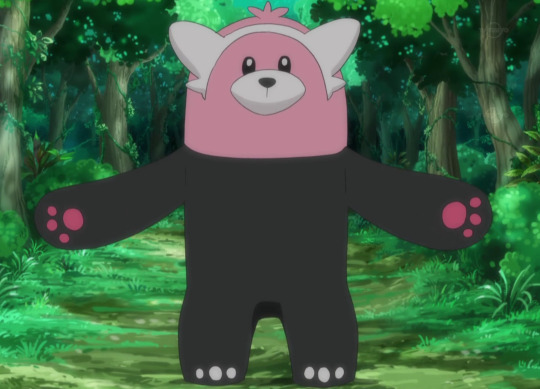

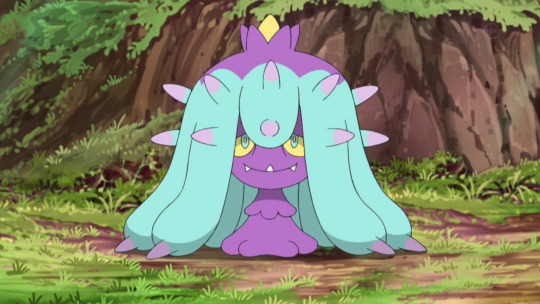
Yes? That's more the writers do. In current canon these Pokémon never lived at all. Dead memories in the haze.


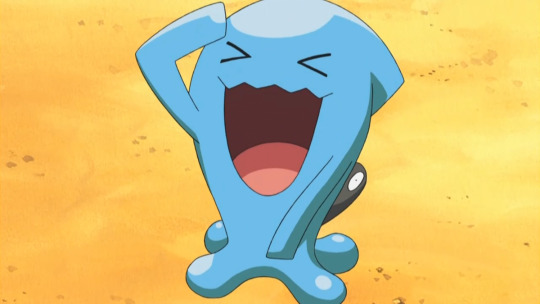
14 notes
·
View notes
Text
“Batman” Series Take
After chatting with @echidnapower and others about the DCAU, headcanons, rewrites, and the like, I remembered this little number I put together years ago - an outline for a hypothetical Batman series - a high budget animated series.
Some initial premises: it may seem repetitive, but I think TAS got it right with "Dark Deco." 30s dress and cars mixed with modern computers and TVs (which all have black and white screens) just worked for Batman's world, and if it ain't broke, don't fix it. I would push the architecture into a more overtly Gothic/Victorian style, with interiors taken from the late 50s/early 60s. I wouldn't mind a more "cartoony" character design either; I think a clean, simple, retro look to the characters mixed with very dark backgrounds and stories would make an interesting clash. The format would be hour-long, with 20 episodes a season and a TV-14 rating.
SEASON 1
On a foggy, drizzly, miserable evening, Bruce Wayne slips back into Gotham unnoticed after his many years away. Alfred picks him up, takes him to his parents' graves, and the obligatory flashback to the death of his parents is shown. This is as much of his origins as we'll ever see; Bruce's past, his travels, his training are to be left a mystery.
The Gotham Bruce has returned to has, for years, been under the total control of the Gotham Hold (an equivalent to the Five Families of New York), an alliance of the five major organized crime groups in town - the Falcone Empire, the Maroni Family, The Penguin's Flock, The Grissom Syndicate, and the Thorne Gang. The heads of these gangs are all public figures - Carmine Falcone and Carl Grissom relish their notoreity - but while Gothamites of all stripes have some awareness that the game is rigged, the true extent of the Hold's power and its true make-up is a complete mystery to the public and to most of law enforcement. Harvey Dent, fresh off his election victory, and Captain Gordon have put forward the most determined team trying to bust the Hold, but their efforts have been in vain. The judges and police commissioner they work with are openly corrupt. Of the three largest private companies headquartered in Gotham - Wayne Enterprises, Daggett Pharmaceuticals, and Shreck's Entertainment - two are in league with the Hold.
Bruce and Dent have been friends since childhood, but while the friendship has survived Bruce's long absence, Dent doesn't turn to Bruce for support. Upon his return, Bruce Wayne comes off as a "goody goody," completely incorruptible, but with no social skills, no public presence, and no business sense. No one in Gotham notices or cares that he's back. But while some of that persona is unintentional and genuine, Bruce does get more serious behind closed doors. While he leaves Lucius Fox in the CEO chair that Fox has held since Thomas Wayne's death, Bruce asks him to do more for the city and to ramp up competition with their crooked rivals. He also starts pilfering various cancelled and untested technology projects, which Fox turns a blind eye to.
Batman makes his first appearance on the docks, making short work of some small-time drug dealers. They are associates of the Falcone Empire; applying his detective skills, Batman is able to trace them to the Empire's largest narcotics crew and takes down the whole lot of them as they attempt a big score. On a Halloween later dubbed "Nosferatu Night," he tracks down and assaults the bosses of all the Hold gangs and uses sonar technology to sick thousands of bats on each of them. This strike throws Gotham upside down and emboldens Dent and Gordon, who succeed in forcing out the corrupt commissioner and finding a judge to prosecute the captured Falcone crew. It is Dent who Batman first contacts in this series, though Gordon is soon brought in, and the trio concot a plan to expose the extent of the Hold's power and take down the biggest and most public of its gangs - the Falcones.
Batman's methods let him uncover more than his legitimate partners ever could, and Gordon makes a turncoat of one of the captured Falcone soldiers. In a televised event analogous to the Valachi hearings, Dent uses the soldier as a mouthpiece to make public all of Batman's intel: each gang has its own primary racket, and various systems are set up to interconnect their interests. The Falcones make their living through narcotics and arms smuggling. The Maronis, once the one and only powerhouse in Gotham organized crime, have been cut down by their younger partners over the years and are now headed by a man, "Don Salvatore," who had hoped to escape his family's criminal past and reluctantly oversees his organization's gambling interests. The Penguin's Flock is a loose cabal of eight upper-crust figures who dabble in white collar crime, primarily counterfeiting, fencing of valuable antiques and artifacts, and high level political corruption. Their true leader is unknown, but Batman has observed all its members coming and going from the supposedly ruined Cobblepot estate. The Grissom Syndicate handles prostitution, with waste management as a very strong "front.” The Thornes control the unions of Gotham. There is also the Red Hood, the Hold's murder squad (made of one member per gang) so named for the unique outfit its members wear to avoid detection. Not even Batman could learn the names of the Red Hood's members, known only to the crime bosses. Each gang has a set number of seats on the Hold's "board of directors," and they meet monthly to coordinate and plot new illicit business. The public notoriety drives the Hold underground, and Batman makes a spectacular raid on Carmine Falcone's home, making off with "The Roman's" ledger. Dent is able to use it to secure arrest warrants for the top administration of the Empire, and in the biggest trial Gotham has seen in decades, manages to put Carmine Falcone away for life.
The victory is short-lived, however. The soldier-turncoat is gunned down by the Red Hood as he is brought in to testify at a new trial. The first of the radical criminals make their appearance: Catwoman, who seems more interested in playing cat and mouse with Batman than in any of the things she steals. While Batman hunts down the Cat, Bruce meets Selina Kyle. They immediately form a bond, though Selina seems more interested in a flirtatious friendship than anything serious. When Batman finally catches Catwoman, she proves gracious in defeat, revealing where everything she stole is, though she eludes actual arrest. Selina abruptly stops seeing Bruce around the same time. Next is Ivy, who seduces Dent with a mind to kill him for prosecuting eco-terrorists. Batman stops her, but the affair strains Dent's relationship with his wife Gilda. Finally, Mr. Freeze assaults Daggett Pharmaceuticals, hoping to take revenge on the underlings who caused his condition and to force Roland Daggett to pay for research to save his wife. When Batman stops Freeze, he is able to convince him to put vengeance aside, orders Fox to set up a research lab for Freeze in prison, and for the rest of the series, Freeze is an ally to Batman.
The affair with Ivy is kept hidden from the public and the Hold, but it shakes up Dent's mental state. He begins to see a psychologist - none other than Jonathan Crane, who sees Dent on the side from his duties at Arkham Asylum. Dent is revealed to have a split personality, born from his efforts to suppress his rage after he accidentally killed his alcoholic father while trying to defend himself and his mother. Crane has lately cut deals with the Thorne Gang to get their men out of jailtime, and also engages in many twisted experiments concerning fear. He now wants to see what would happen if Gotham's greatest hero became its greatest public menace. He approaches the Thornes for aid, and without the approval of the Hold, they agree. Dent and Gilda are kidnapped; restrained, Dent sees Gilda murdered before his eyes. As The Scarecrow, Crane tortures Dent with fear toxins, what he knows about his past, and a face full of corrosive bleach. Batman learns of the kidnapping and rushes to the rescue, but is too late to save Dent or capture Scarecrow. When Dent recovers physically, his mind is gone. He becomes "Two-Face Dent," and with a flip of the coin, vows to take down the Hold by killing off all its members. He goes on a mass shooting spree, sending Gotham into a panic. Rupert Thorne manages to escape Two-Face's wrath, but is killed by the Red Hood for helping to bring this menace upon the Hold. Crane delights in his "experiment's" success, and Gordon and Bruce are left to deal with the loss of their friend.
SEASON 2
A few months have passed. Two-Face has continued his shooting spree, driving all of organized crime further underground. He has claimed several Thorne soldiers, an entire Falcone crew, and the Falcone acting boss. The next in line for that job, Angelo Falcone, finds the Hold falling apart. He and the Penguin (who finally reveals himself to his fellow mobsters via speaker phone) both conclude that the strongest Hold gang could take advantage of their situation and absorb the others, and so the two begin a race to conquest. Their most visible battlefield is in their support for competing factions in the Thorne Gang; underboss Lew Moxon is backed by the Falcones, while lieutenant Vasily Kosov has the support of the Penguins. Angelo also adopts the guise of Holiday and starts killing off the biggest threats to his Empire in the other gangs. The Holiday guise is a risk; after the Two-Face fiasco, the Hold has voted to cut all ties to the "freaks." Not only has Angelo become a freak, he has kept in contact with Crane. And while he and the Penguin duke it out, sister Sofia and aunt Carla work within the Empire to undermine his reign.
Meanwhile, Gordon and Batman have soldiered on without Dent. The new DA, Janice Holder, is unfriendly towards Batman (and, as a social friend of Angelo Falcone, is lax if not openly corrupt when it comes to the Hold). Nevertheless, Gordon and Bats do have their successes. Gordon has put together a loyal team (Bullock, Montoya, John Blake, O' Hara). Selina abruptly reappears, and she and Bruce start casually dating. And Batman has an ace in the hole - Salvatore Maroni. After the Two-Face fiasco, the reluctant godfather has had enough. He won't testify for the police or the law, but he will talk to Batman. Among the nuggets he gives up is the identity of all the Red Hood assassins, as well as the leaders of the hit squad - Joe Chill and "Glasgow Jack," who have only been seen before this as chauffeurs and, in Jack's case, a popular stand-up at Underworld nightclubs. Based on Maroni's tips and Batman's own work, the Grissom Syndicate becomes the next prime target in the Hold for law enforcement. Tipped off by a mole, Grissom tries to avoid Carmine Falcone's fate. He resigns as head of his Syndicate, names Jack as his successor, and goes into hiding. Jack is unpopular as a boss in the Syndicate and in the entire Hold, not because he is too greedy, but because he frightens them. Ever since Batman first appeared, Jack has grown more and more wild - and he was barely in control to begin with. Since the Red Hood will not betray their boss, the Hold recruits Grissom gunmen to take Jack and his crew out as they inspect a chemical plant they operate as a front, Axis. Tipped off, the Red Hood all don their standard disguise and ambush their attackers. Batman and the police try to break up the fight and bring Jack to justice, but in the end, two are captured, two slip out, and another is accidentally knocked into a vat of chemicals by Batman. Jack and Joe Chill are not accounted for.
While Maroni's testimony is helpful, Batman has no respect for him. He is horrified when Maroni turns up at a Wayne fundraiser as a guest of Leslie Thompkins. It is revealed that Salvatore's father Luigi was a patient of Thompkins, was also a reluctant mobster who tried to reform before the Falcones started a mob war, and had his life saved by Thomas Wayne. Dr. Wayne and Luigi became friends in spite of themselves. Salvatore is also Thompkins' patient and has kept a correspondence with Alfred started by his father. Bruce develops a reluctant respect for the godfather, and just in time. The Hold has found out that Maroni talked to the Batman, and kidnaps his two sons to try and force him to come forward and reveal what he told. Instead, Batman and Maroni blaze into where the boys are being kept and save them. Maroni officially cooperates with law enforcement, convinces several of his top men to do the same, and is deported to Sicily, where he takes up his dream job as a writer.
The testimony of the Maroni defectors opens up the entire Hold to prosecution, and Batman and Gordon are hopeful for a successful strike against them, despite distractions from new "freaks" (Man-Bat) and Catwoman's return. But a few weeks after the incident at Axis, a radio message announces that Grissom will meet his death at the hands of the Joker. The prediction comes true, down to the minute. Several more members of the Syndicate meet a similar end before the targets become random civilians. The deaths are all caused by "the Joker's Patented Smylex Venom," which Batman is able to synthesise an antidote for, but no one can predict when or where the deaths will come. The Joker makes his first public appearance in a deadly parade that leaves one of the busiest streets of Gotham in ruins, courtesy of Mr. J and his Red Triangle Circus Gang. It is implied (but never confirmed) that the Joker is either Jack or Joe Chill, and whichever he isn't is the Ringleader character of the Circus Gang. The Ringleader is the Number 3 man in the group; Number 2 is Harley Quinn, who has Dini's origin but met Joker outside of an institution.
The Joker keeps up his reign of terror, always evading the law and Batman. His antics are destroying organized crime. After Grissom's death, what remains of his gang is absorbed by the Penguins; what was left of the Maronis was absorbed by the Falcones. They continue to fight each other through the Thornes. Angelo Falcone hires Crane to take out the Joker. Crane gets his chance when the Joker breaks into Arkham. As Scarecrow, Crane tries his fear gas on the Joker; it has no effect. In response, the Joker gases Scarecrow, and all of Arkham, with a laughing gas, and sets them all loose on Gotham. When Sofia Gigante gets wind of her brother's failed plan and Holiday guise, she puts a contract on his head; on the 4th of July, Angelo takes them both out in a suicide strike, leaving his top man as the boss of the Empire. In the Thorne Gang, Kosov kills Moxon and agrees to serve under the Penguin. Batman exposes the Penguin as Oswald Cobblepot at some point in the season, but he is able to remain an obscure figure to the public. Two-Face, with a flip of the coin, plans a bombing of the Cobblepot estate, but the Penguin escapes to an underground lair. He and the new Falcone boss make peace, and the streamlined Hold plots its future in a Gotham where the criminal scene is dominated by the freaks.
Batman and Gordon rush to control this situation. Batman targets the Joker himself, getting unexpected help from Catwoman. In the end, the Joker falls from a building and his body can't be found (the Joker's appearances would follow in the vein of his earliest comics; he appears to have died, but you're never sure). While most of the inmates of Arkham (and Scarecrow) remain loose, Gordon manages to scatter them, capture most of the Circus Gang (Harley and the Ringleader get away), and Two-Face. He is promoted to commissioner.
SEASON 3
The most episodic season, featuring encounters with classic Batman foes. A proper confrontation with Scarecrow, a proper confrontation with Penguin, Riddler, Harley and Ivy, Mad Hatter (with Tweedledee and Tweedledum as henchmen, naturally), two more rounds with the Joker, King Tut (who is more Catwoman's foe than Batman's), Clayface, Two-Face's escape from Arkham, and Croc. Catwoman gets into hijinks throughout, and we (but not Batman) are privy to her darker side.
I've always wanted to see a Batman story that went something like this: Gotham hits a calm spell, and while Gordon spends the extra time with his family, Bruce has no clue what to do with himself.
Throughout, Bruce and Selina get more serious. Eventually, her identity is revealed, with the twist that it's Bruce instead of Batman who discovers it; he doesn't take her in right away, not knowing how to take it. The season finale is an adaptation of the Mad Monk story, forcing Batman to accept the existence of the truly supernatural.
SEASON 4
It opens with a trip to Metropolis on the trail of some of Penguin's smugglers, a "World's Finest" episode. When Bruce gets back to Gotham, Selina has left town under mysterious circumstances. However, a woman named Talia who Bruce meets at a ball keeps his mind off of Selina. Talia appears to be the daughter of a visiting diplomat, and as she and Bruce fall in love, she puts pressure on Bruce to become a more public figure, to use his wealth and influence for philanthropic causes. Lucius Fox has encouraged similar goals. This leads to Bruce having an experience based on the "Ghosts" segment of "Haunted Knights." This experience causes him to question his image of his father and his commitment to his persona. This also causes him, when he next faces the Joker, to make an offer similar to that at the end of "Killing Joke;" the Joker refuses, but agrees to go to Arkham "for a nice long vacation." Meanwhile, a few more notables from the Rogue's Gallery make their appearances; Solomon Grundy, Ventriloquist, and Hugo Strange.
Strange, as it turns out, is in the employ of the diplomat, who is of course Ra's al Ghul. Together, they deduce Batman's true identity. After the obligatory test of his "rescue" of Talia, Ra's wants Bruce as his successor and Talia's husband. When Bruce refuses on both counts, Ra's and Strange attempt to frame Batman for various crimes; they eventually succeed, Gordon the only one keeping the faith. Batman flees Gotham and the country on the trail of Ra's and Strange. He eventually learns of Ra's immortality through the Pits, that there are only a very few Lazurus Pits left, and that Ra's plans to detonate them to wipe out humanity, courtesy of Strange's technology. However, Ra's has misled Strange about his intentions. When Strange learns of the double-cross (courtesy of Batman), he engineers a controlled destruction of the Pits, preventing mass destruction and robbing Ra's of his immortality. When there is only one Pit left (the one their headquarters is built on), Ra's stabs Strange, and he and Batman have their classic duel. Ra's seems to have the upper hand, but in his last moments of life, Strange draws a gun and puts a bullet in Ra's head. As the headquarters begins to collapse (Strange had set it to blow), Talia throws herself into the fire rather than go with Batman.
As Batman, badly injured, flies back to Gotham, the military is scrambled to shoot him down. He is still not cleared of false charges. Alfred has been working on exonerating him, and sends his evidence to Gordon, but Gordon can't spread the news in time to stop Batman from being blown out of the sky. He staggers out of the wreckage, only to be shot into the water by soldiers. He barely makes it back to Wayne Manor. As Alfred pieces him back together, Bruce decides to give up the cape and cowl and honour his vow another way.
SEASON 5
We open six months into "The Year of the Dark Knight's Rest." Bruce and Alfred have closed Wayne Manor and moved into a penthouse in the city. Bruce has taken Talia's and Fox's advice, becoming a public philanthropist and more involved in his family’s company. However, he is still Batman at heart, and his unsatisfied desire - his need - for the cape and cowl is taking a toll on his state of mind. He has also been diagnosed with the early stages of Type 2 diabetes. In the Batman's absence, Gordon has generally managed, though morale in law enforcement has sunk and morale in crime has risen. The Penguin has turned over his criminal interests to underlings (ostensibly; in fact, they are front bosses still answering to him) and set himself up as a legitimate figure. Though he had been known as a crime lord, the public never knew the extent of his misdeeds, and he enjoys a wonderful reputation and a greater degree of political influence than ever before. Many of the freaks have been released (or escaped) from Arkham, and have carved up the city into spheres of influence, where their particular brand of crime dominates. The Joker breaks out of Arkham and goes on a rampage to try and lure out Batman, but when he never appears, the Joker gives up and goes back to Arkham. The damage caused is another weight on Bruce’s psyche.
A year on from his “retirement,” Bruce attends a charity circus, headlined by the Flying Graysons. Another member of the circus is Bane. Imported as an enforcer for the Falcones, he has gone undercover in the circus to ensure that they pay their protection money. When they stop, Bane enlists a crew to cause an accident for the Graysons, leaving 13-year old Dick an orphan. Bruce gives the boy a home and, seeing the effect the loss of his parents has had on Dick, finally takes back up the mantle. He tracks down the hoods, who finger Bane. When facing Bane, Batman is faced with just how much of his edge he's lost, and almost has his back broken when Dick (who found the cave and stowed away in the Batmobile) saves his life. Together, they bring down Bane, and Batman realises Dick's drive. Reopening Wayne Manor, he offers to train Dick, and Robin is born.
Batman and Robin spend the rest of the season bringing down mobsters and encountering notables from the Rogue's Gallery. Along the way, they encounter Barbara Gordon. Wheelchair bound from childhood in this continuity, she deduces their identities and offers her computer services; Oracle is born. Selina returns to Gotham, with nothing to say about her absence. She starts going out as Catwoman again, and Batman dutifully goes after her, though it soon becomes clear that she is handing out wealth she aquired during her time away, not stealing it. During one encounter, they say certain lines to each other; in their first meeting out of costume, they repeat the lines, and Selina learns Bruce's identity. They get together, and Catwoman becomes (a distant) part of the Bat-family.
SEASON 6
Two years have passed. Batman, Robin, and Oracle are a seasoned trinity of crime-fighters. Bruce and Selina have maintained their relationship, and Catwoman assists on a case-by-case basis. Bruce is as close to happy as it's possible for him to be. Most of the radical criminals are in Arkham, or well-contained.
But the Bat-family is faced with a new kind of foe. The Penguin, as a legitimate figure, has formed closer partnerships with Shreck and Daggett. They have successfully funded a mayor, forced Gordon out of office, bought most of the city councilmen, and gotten massive deregulation passed. They've destroyed the environment and preyed on the populace, and all of it legal, since the start of Season 5. Because this was done over a long span of time, and because the radical criminals are still so visible, no one has really stopped to notice. Batman's new strategy is one of espionage; with Catwoman and Oracle's help, he uncovers the full extent of what has been done, and through viral messages, turns public opinion against Penguin and his allies. Meanwhile, Bruce redoubles Wayne Enterprises' efforts to compete with Daggett and Shreck.
It isn't all corporate espionage and stealth campaigning, though; there are still crooks to fight. The beginnings of the the Royal Flush Gang pop up, and Hush arrives on the scene. This version of Hush has a grudge against Bruce and Harvey Dent, who was with them on that fateful day at camp. He kidnaps Bruce and Two-Face, but the experience reawakens Harvey and his free will. He stops Hush without killing him, frees Bruce, and checks himself in to Arkham (I figure at least one version of Harvey should have a happy ending).
Things begin to turn south towards the end, however. The Joker breaks out of Arkham and kidnaps Robin on his first night going solo. Batman, Catwoman, and Oracle search for weeks, without leads, when a massive explosion rocks the Axis Chemical ruins. Robin is found, hideously scarred and barely alive. When his fate is pronounced "uncertain" by ICU, Batman tears through the underworld, demanding leads on the Joker. He finally tracks him down to a ruined carnival, where he sees Harley kill the Ringleader for perceived disloyalty. When Batman finds the Joker, he is treated to footage of Dick's torture, and the Joker reveals that the Boy Wonder was eventually coerced into revealing everything he knew about Bruce. It is implied (but not confirmed) that the Joker knows something about the deaths of the Waynes. Batman attacks, and it becomes clear that the Joker's whole plan in torturing Robin was to drive Batman to kill him. He comes very close, but in the end, just cannot do it. When he refuses, the Joker goes on the attack, hoping to force a murder in self-defense. In the end, the Joker ends up killing himself. His last words: this isn't funny.
Harley is taken to Arkham. After a few months, Dick has recovered physically. Emotionally, there is some work to be done, but he wants to take up the costume again. When Bruce refuses, the two argue, and Dick ends up stealing the Robin costume and running away. Bruce does not go after him.
Even with Dick's departure, the strategy against the Penguin works; his mayor is recalled, Gordon is reappointed, and regulations are restored. The Penguin is arrested on evidence of his past criminal deeds, and Daggett falls under investigation. But Shreck weasels his way out of trouble. When his secretary finds out about a certain scheme, he hires Black Mask to kill her. That secretary was a good friend of Selina's. She tracks down Black Mask, and the fight ends with Mask and Shreck in a precarious position. Catwoman lets them die, and becomes wanted for murder. When Batman confronts her about it, he appears to talk her into coming home with him. However, she sees him reach for handcuffs. She swipes him across the face and skips town again. The deception causes friction with Alfred and Oracle, and Bruce gives up on any love life.
SERIES FINALE MOVIE
It is 20 years in the future. Gotham is not quite as futuristic as in "Batman Beyond," but it is on its way (it has a retro-futuristic look, with Gothic touches of course). This "New Gotham" barely hides the ruins of the old; not long ago, a massive hurricane struck, crippling the city. It has just gotten back on its feet. Dick Grayson has gone through the Teen Titans and Nightwing phases of his career, married Starfire, and is running for mayor of Gotham. Barbara Gordon has replaced her father as police commissioner. They are in a similar spot to Dent and Jim at the start of the series: organized crime is again ruling the streets. Supplanting the Falcones and the Penguins as the major force in the underworld is the Jokerz. They operate in several large groups, loosely involved with each other but all paying homage to Harley Quinn as the queenpin. Harley has clung to the delusional belief that "Puddin" will come back for her, and her inner circle has taken on a cultlike atmosphere. The biggest corporation in town is DagShreck Power, an amalgam of the old Daggett and Shreck businesses bought and controlled by the unscrupulous Derek Powers.
The Jokerz and Powers pose a problem beyond what Barbara and Dick can manage alone; they need Batman. But Barbara has not spoken to Bruce for years over some mysterious falling-out. Dick and Bruce are still estranged. And Bruce himself is not up to the task anymore. Years as Batman and advancing diabetes have taken their toll on his body. Technology enables him to patrol the entire city still, but in hand-to-hand combat he can only manage for short periods of time. While his mind is as sharp as ever, he is limited in what his detective work can accomplish, not having a partnership with the police anymore. As Bruce, he has lost touch with his company. Fox's replacements have not done well, and there is immense pressure to sell the company to Powers, something Bruce seems prepared to do. He spends his days being pieced together and cared for by Alfred and playing dice with Harvey, who has fully recovered and lives a quiet, anonymous life in the city.
Though Alfred hides it well from Bruce, he is feeling his age, and soon is on his deathbed. He tells Bruce that the has planned his funeral, that certain people will be there, and that he wants Bruce to try and make amends with these people. When the funeral arrives, Bruce meets several mourners, including Don Salvatore Maroni, whose sons have become honest and effective businessmen at Wayne Enterprises. But the people Bruce is expected to make up with are Dick, Barbara, and Selina Kyle. Selina and Barbara remain cold to his (admittedly feeble) efforts, but Dick, encouraged by Starfire, agrees to try to patch things up. Also at the funeral are members of Bruce's mom's family - the McGinnis family. Bruce's cousin Warren, an employee of Powers, asks Bruce to give his wayward son Terry a job. Bruce initially refuses, seeing Terry as a punk, but he later observes him defending his brother from bullying cousins. Knowing he'll have trouble living alone in his condition, he agrees to take Terry on as an attendant and chauffeur.
Terry, a 17-year old ex-punk with a healthy social life, is initially bummed about the job, but starts to have a better view of Bruce when he observes "the old man" outmaneuver Powers and the traitors in his own company, appointing Maroni's sons as the new heads of Wayne Enterprises and retaining ownership. As they make their way home, they are attacked by some Jokerz, and Bruce again impresses Terry by fending them off. The fight drains Bruce, and he has to be rushed home. While preparing to go home, Terry finds a bat in the grandfather clock, and uncovers the Batcave. Bruce throws him out.Terry and his father fight over his losing the job; when Terry comes home after the fight, his father is dead. A note written right before his death indicates Warren knew something about Powers and the Jokerz, but he was unable to finish writing it before being killed. Terry goes to Bruce, who does not offer or refuse help. When he leaves to take his medicine, Terry steals the suit and jet, intent on getting Powers. Bruce takes control of them and brings them home. He tells Terry that what he uncovered is the first piece of a puzzle, and that he is willing to train him so that they can solve it together.
Over the next few weeks, this is just what they do. Bruce gets more involved in the company to have opportunities to meet with Powers, while Terry is given the batsuit and allowed to spy on Powers and the Jokerz (but nothing else). Terry is a fast study on detective work and logic, being a fan of Sherlock Holmes, but is unrefined in physical combat, and Bruce is limited in what he can teach him. After a time, Terry wants to be allowed out on a full night. When Bruce refuses, he takes off anyway. He takes on a gang of Jokerz, gets in way over his head, and barely makes it out alive. Meanwhile, an attempt is made on Bruce's life; Powers wants him out of the way. All the stress of the night results in a heated argument in the cave, culminating in Bruce having a diabetic stroke. During his recovery, Dick, Barbara, and Selina all come to visit, and they all (more or less) reconcile. Dick and Barbara remain skeptical of Terry, though Dick is more open to the idea of a new Batman. Selina and Bruce find they still have feelings for each other, and Selina moves in to Wayne Manor to help take care of him. Being in much better condition than Bruce, she is the one to train Terry in martial arts, and in whip work; this Batman has a bit more of Zorro in him than usual.
Together, the three of them uncover the plot: Powers has been smuggling in equipment for the Jokerz. While he thinks it will be used to extract ransom, it is actually meant by Harley to fulfill an old "master joke" the Joker had drawn up years ago (a variation on "Joker: Last Laugh.") When push comes to shove, Bruce is both afraid for Terry and reluctant to give up the mantle, refuses to let Terry fight, and instead passes the information on to Barbara and Dick. But when a Jokerz mole passes along word, the pair are attacked and hospitalized. Starfire is injured too, leaving the Bat-family as the city's best line of defense. Bruce eventually relents; he and Terry both don the cape and cowl (with Selina as Catwoman) and take on their enemies. Powers is turned into Blight and escapes, most of the Jokerz leadership is rounded up, the plan is foiled, and Harley dies (the Joker didn't want anyone doing this "gag" but him; he found a way from beyond the grave to kill anyone who tried). In the conflict, both Batmen show their stuff, but Terry ends up having to save Bruce.
As they start to recover, Dick and Barbara concede that Terry is worthy of the mantle, though it is clear he needs more training. Barbara agrees to tolerate his presence on the condition that Bruce permanently gives up the cowl. Bruce agrees, but can't resist one last "flight." While patrolling the city, he spies a couple and their son being held at gunpoint in Crime Alley. He swoops in to help, and he does scare off the gunman (and the couple), but he takes a fatal bullet wound. With his last strength, he makes it back to the cave and extracts a promise from Selina to finish Terry's training. Two funerals are held; one in public, one for the Bat-family, who bury Bruce in the cave. Terry prepares for his first solo flight. Batman lives on.
15 notes
·
View notes
Note
For the Turn Left meme, because I'm an awful person: What would have happened if Lance had killed Keith on sight when they first met back on Berlou?
[Turn left meme]
FUCK YOU, that's what (j/k You know I love the angst.)
(But seriously, this AU is dark as fuck, so trigger warnings: death/grieving including multiple potential instances of major character death, depression, PTSD, re-traumatization, mind control, uhhh I think that’s everything? Putting this under a cut because it’s long and dark. You’ve been warned.)
Okay, so let's take this in chronological order, because there are a fucking lot of implications of this.
Immediate Ramifications:
I meant, Shiro was right there. He was sprinting to cover Keith, and he was close enough that Lance still would have got the message even if Keith was dead before Shiro got there. So there's always the possibility that Lance panic-shoots the second dude in Galra armor before he realizes that it's Takashi Shirogane. So there's bad end #1, because the paladins didn't know about Haggar or her weapon when they arrived; it was Keith and Shiro who told them. With them dead, Haggar fires, and there goes five paladins and three lions. Congrats, Matt doesn't even really have time to process that Shiro is dead, and Lance sure as hell doesn't have time to feel guilty for it.
So we have to assume Shiro survives, because that's not nearly enough angst to do this left turn justice.
So Shiro survives, but the rest of that scene plays out more or less the same. Matt arrives, freaks out a little, not least because Shiro's cradling the dead body of a Galra officer and not even making an attempt to defend himself against a potential follow-up shot from Lance. Allura arrives to confirm that Shiro's a friend, and Lance goes deadly quiet as the horror begins to set in. It doesn't help that Shiro is so dead-eyed he barely reacts to Matt, just sort of... collapses into sobs until Matt eases him away from Keith and the focus slowly shifts back to the ongoing battle.
The Battle for Berlou:
The battle continues largely unchanged, right up until the battle to destroy Haggar's weapon, where they start to feel Keith's absence. Allura takes a couple of the rebels with her when she goes hand-to-hand, and she manages to make it out--barely. Except Matt's been hit by the druids' Quintessence attack and is out cold, the Red Lion falling from the sky, and there's no Keith to take the controls. The fall doesn't kill them--Red has that much control, at least, but Matt and Allura are both banged up after it. Matt definitely can't fly for the rest of the battle, and Allura honestly isn't in any shape to try to emergency pilot Red, either. So Voltron's out for the rest of the fight.
They probably still win, eventually, but it's a long, hard battle, and a lot of people die. It's definitely not the resounding victory that it was in Duality canon, and even worse, the team isn't in good shape after it's over. Sure, Keith isn't there to be the focal point of the friction, but Shiro is bitter and grieving, and there's no one else who can help him with it, really, because no one else even spoke with Keith, except for the brief, anonymous exchange after the fight with Sendak. Matt tries to help Shiro, but Shiro just sort of shuts down about it--and as hard as he tries not to let his grief bleed through, there's gonna be some bitterness directed at Lance, which just sort of makes everything a million times worse.
Dual Paladins:
Figuring out the whole dual paladin thing suddenly becomes a million times harder, because see... the thing is Keith and Matt happened first because instinct is Red's whole shtick. They needed to sync up, so they did. Boom. Easy as that.
That doesn't happen this time, and Shiro is still deep in mourning for Keith and suuuuper doesn't trust this team (Matt is the sole exception and even there there are walls for days). So that's a no-go, and the lack of awareness of the potential means no one even realizes Shay's a paladin for ages.
Assuming no one dies because they're suddenly fighting this war on hard mode, Pidge and Ryner are probably the first to sync up and the entire team has zero clue what's happening. They eventually figure it out, and Hunk and Shay sync up, and Shiro and Allura start to work on it, but it doesn't happen quickly. Or at all. Shiro's... Frankly, Shiro's acting like canon Shiro/Ryou in late season 3-season 5, but ten times worse--tense and short-tempered and just constantly criticizing everyone because not only is he traumatized and grieving, but he also does not feel safe on the castle-ship. He's just always waiting for someone to turn on him because he worked for the Galra. He says absolutely nothing about what happened to him for fear of it getting turned around into an accusation, and he has a really hard time opening up to the others enough to form Voltron. It gets so bad that once Ryner joins the team and they all realize that Allura is a legit paladin, after all, Shiro throws in the towel. He'll fight on the ground, but he lets Allura fly, because she doesn't have the same problems forming Voltron as he does.
Lance, meanwhile, is guilty as fuck over killing Keith. He didn't know the guy, and Shiro won't talk about him, but it's obvious that Shiro isn't evil, so the fact that he not only trusted Keith with his life, but is visibly devastated about losing him, even weeks later? Yeah, Lance feels like a fucking monster, and there's nothing he can do to make up for that. He can't apologize to Shiro, because Shiro can barely stand to be in a room with him, and he can't go back and un-kill Keith. Hunk and Allura and Coran help him as much as they can, but Lance keeps beating himself up, to the point that he starts freezing in battle, afraid to kill anyone, because what if they're another Keith?
Shiro has growing concerns about his arm and the knowledge that Haggar can use it to control him, but he sure as fuck doesn't say a word to anyone. Are you kidding? They'd kill him in an instant.
Dark!Shiro Arc:
Hoooo boy. Hoo boy. You thought this was bad in canon. HA.
The Battle for Kera goes down largely the same way, but with Shiro going in on foot with Pidge instead of Allura. Lance still goes in on his rescue mission, and he still runs across Haggar, but when the team finds him, Shiro is at the end of his rope. Rather than fretting about Lance's wounds, he launches into a lecture (a lecture which is, to be fair, a highly stressed expression of genuine concern, just. He hasn't processed yet, and he definitely hasn't made up with Lance. It's been six weeks at this point, and Shiro has spent most of that time actively anticipating being murdered in his sleep. I cannot emphasize enough the degree to which these kids are not in a good place.)
Regardless, this gives Haggar Ideas, so instead of capturing Shiro, she possesses him but keeps a low profile, leaving Shiro to act as her agent from within Voltron.
(So there's bad end #2: Shiro kills everyone. Fuck.)
Miscellaneous
If??? We somehow make it past all this hell without killing anyone besides Keith????? (Technically freeing Shiro is the same as always, but even easier because Allura isn't also possessed, so as soon as they realize what's happening, they can probably stop it.) It still doesn't really get better??????
Shiro just. Shatters. He's been through too much, he can't trust anyone or anything, not even himself. He can't make himself care enough to be mad at Lance anymore. He can't even look at Black without feeling sick about how he's only fucked things up since he got to the castle. He slides into a deep depressive episode and just sort of ghosts around the castle, struggling to care enough to perform basic functions like eating and showering. Matt helps as much as he can, but Shiro is in a very dark place right now.
(This isn't helped by the fact that Matt is still struggling with his own trauma, both emotionally and physically, and he doesn't have a copilot in this verse. He’s exhausted, frustrated, and has no clue how to help himself, let alone Shiro.)
Val arrives on the castle-ship, and Lance--neck deep in self-loathing because he blames himself for what happened to Shiro--almost loses it. He killed an innocent person for no goddamn reason, he single-handedly destroyed Shiro, and now it turns out he also completely failed to protect his own family.
The first slightly less-awful thing happens in this AU, and Nyma becomes a Red because Matt is fucking drowning and he needs someone to fill the hole Keith left behind. They don't click as well as Keith and Matt did right off the bat, but they get there, and Matt really appreciates that Nyma's got his back without babying him.
...Let's just say the paladins are all harder for their experiences by the time they get home. After the battle, Shiro stays on Earth to get some fucking therapy, and Akira stays to take care of him. Meri joins the team as the third Blue, but honestly she probably ends up working something out with Black even though they aren't very compatible, because Allura needs some help. Fuck.
I don't even know where it goes from there, because there's still a war to be fought, and they're all already hurting for allies. I like to imagine Shiro slowly heals once he's away from the war, and eventually he and Lance meet and talk and hug it out, because deep down, Shiro doesn't blame Lance at all, for any of it, and Lance needs to hear that from Shiro before he can let go of his crushing guilt.
#dualityverse#ask meme#turn left meme#this is definitely the bad timeline guys fml#dennymark-legobutt#answers
14 notes
·
View notes
Photo
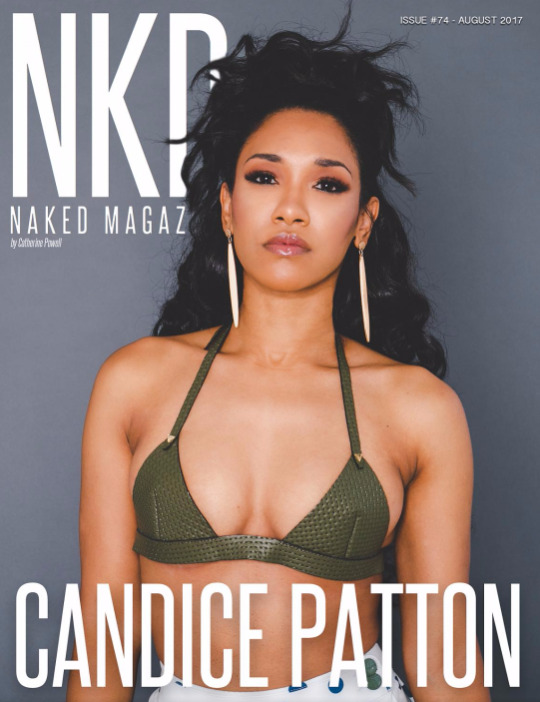



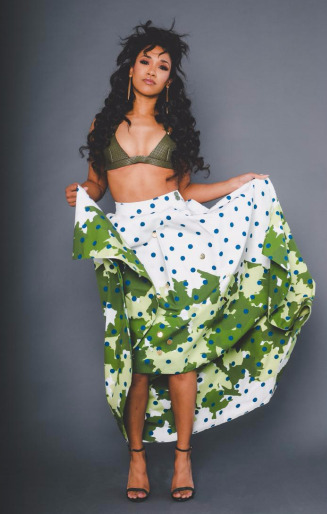
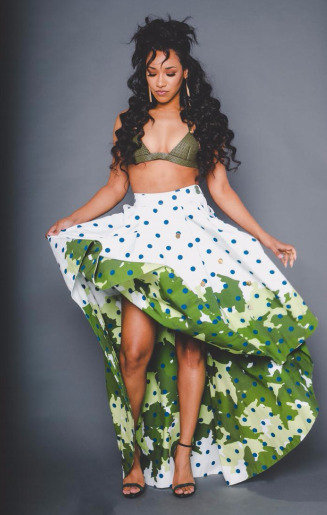

On the Coastal Tip of Jamaica, actress Candice Patton stands barefoot in a sheer yellow dress before settling turquoise waters. Her arms sway back and forth as the Caribbean air billows through the thigh-high slit. She gives the camera a small smile as the sun radiates off her skin and the tide tiptoes towards the shore. The Instagram boomerang I’m glancing at has now been viewed over 200,000 times by her 1.2 million-user following.
It’s mid-June; a median between two milestones in Candice’s life - two weeks before her 29th birthday, and two weeks after the Season 3 finale of The Flash aired in homes nationwide. The superhero fiction show, based on the DC Comics character of the same name, stars Candice as Iris West, opposite Grant Gustin as the titular hero, Barry Allen. In the last three years, The Flash has garnered over 15 awards, with Candice herself most recently winning a Saturn Award for “Best Supporting Actress on Television”. It makes sense that CBS Watch! Magazine would send her over to the Caribbean for a photoshoot.
The CW star calls me from her residence in Los Angeles on a Friday afternoon, after her trip in Jamaica. I expect her to sound exhausted from her jet setting, but she’s not. To my astoundment, there’s a lot on her mind. I come to realize that, unlike Iris West, Candice Patton is equipped with a power of her own.
The Mississippi-born and Texas-bred thespian participated in school productions and out of school drama programs throughout her entire life. In high school, Candice was a cheerleader until she tore her anterior cruciate ligament during her senior year. The injury kept her benched for the remainder of the season, but allowed her to focus on acting. She ended up pursuing theatre at Southern Methodist University in Dallas the following year.
“Acting was always something that empowered me and gave me joy,” she says. When I was younger, I never really thought about acting professionally, but it gave me a huge outlet for my own personal struggles.” After graduating with a BFA in Theatre from SMU in 2007, Candice moved to Los Angeles, where she has lived ever since. “There’s something about being young enough and innocent enough to think that anything is possible,” she says. “I don’t think I would have made the move if I was older.” As it turns out, making that move would be the first step in her journey towards her television debut.
In Los Angeles, Candice felt she was sucked into an atmosphere bathed in superficiality. To her, home was only a four-hour flight away, but felt much, much further. Immersed in a culture she had never experienced before, she didn’t feel like a perfect fit. “You’re eating new foods and everything’s so healthy and people are obsessed with the way they look,” Candice says. “It was hard for me to feel like I had a place in L.A. or that I was cool enough to think I could even be an actress and contend with all these other people.” In the midst of the culture shock and the absence of southern hospitality, Candice motivated herself to audition for anything and everything. And in doing so, she understood just how unsympathetic the entertainment industry was. “I was getting rejected day in and day out,” she continues. She pauses briefly then says, “I really don’t know how I survived.”
Between her adjusting lifestyle, ongoing rejection, and daunting insecurities, the pressure to cultivate her own niche began to rise. Candice was in the right rooms with the wrong people - managers, friends, and industry outsiders who all had hot takes on how success was achieved in that city. “I was told I had to be a certain weight, or to look more like some other girl,” she recalls. “I felt the pressure of that then and I still feel the pressure of that now.” Despite the unsolicited advice from her peers, Candice continued to do what she knew best - working hard, working well, and committing to her craft. “I had to keep putting one foot in front of the other until something turned around,” she says. “I’m glad I stuck with it as long as I did.” By 2012, Candice’s acting repertoire included appearances on Entourage, Heroes, CSI: Miami, Grey’s Anatomy, Rizzoli & Isles, and The Game. And then came 2013.
In the weeks before pilot season that year, Candice received an email from her manager. Arrow co-creators Greg Berlanti and Andrew Kreisberg were casting for their newest DC Comics series, The Flash. Grant Gustin, who appeared twice on the hooded-vigilante series as Barry Allen, reprised his lead role. The planned backdoor pilot was cancelled in favor of a traditional higher-budgeted pilot by networks executives who were impressed by early screenings of Grant’s appearances on Arrow. The e-mail from her manager read, ‘This is your role. It’s perfect for you.’
The Flash follows the chronicles of socially awkward CSI Barry Allen and the aftermath of his mother’s supernatural murder. Candice auditioned for the role of journalist Iris West, the daughter of Detective Joe West, and Barry’s childhood best friend. “I was thrilled to be going in for a lead female role that isn’t traditionally played by an African-American,” Candice says. “And deep down, I always wanted to be part of some superhero show or film.”
In Season 3 of The Flash, Barry runs back to his childhood home to prevent his mother’s murder. After saving Nora Allen from the Reverse Flash, he creates an alternate reality called Flashpoint. The famous comic crossover story arc details an altered universe in which Barry Allen is the only person aware of the differences between the original timeline and the altered one. This heart-wrenching season of was pieced around Iris’ forecasted murder and Team Flash’s attempt to stop it. It’s clear her character’s resilience is an important sticking point. “Iris is visibly fearless, even when she’s vulnerable. Strong women are capable of experiencing fear, but then choose to find the strength to move forward. That’s what Iris does,” Candice says.
She’s loyal to Barry, to Wally, to her dad, and Team Flash,” Candice continues, noting that Iris spends most of her time at S.T.A.R. Labs than she does at her actual job. “She doesn’t have powers but that doesn’t get in the way of her trying to contribute. I think she’s a character that both men and women can admire.”
The Season 3 finale of The Flash premiered on May 23, 2017, the coincidental date of Iris West’s prophesied death. Fans witnessed the loss, the betrayal, and the fate worse than death - tragedies foretold by the season’s big bad, Savitar, in previous episodes. Above all else, they watched the long-awaited development of West-Allen, the ongoing fan-favorite nickname for Barry and Iris. “This season was filled with so much emotional turmoil,” Candice says, laughing on the other end of the line. “And right when you think they’re back on track and can finally plan their wedding, they can’t.”
In the season’s final moments, The Flash made some poignant, if not complete strides. After conquering the darkness that monopolized Barry’s entire year and the anticipated unveiling of Savitar, “Finish Line” propels the series into potential plot twists and upcoming comic book villains. Regrettably, like most season finales, it’s cut too short. The Speed Force wreaks havoc above Central City, demanding a new speedster to take the place of the beloved Jay Garrick. Barry accepts his imprisonment for creating Flashpoint, leaving Iris, Joe, Wally, and all of Team Flash behind. “It’s The Flash,” Candice laughs. “You never know what you’re going to get. There’ll be more drama.” The conflict is expected, regardless of who ends up in that revered red suit.
Among other running shows on the network, The Flash is notable for their racially diverse cast. The core ensemble is comprised of Caucasians, African-Americans, and Latinos alike, with other minorities starring as citizens or city villains. “The diversity in The Flash is indicative of the world that we live in,” Candice says. “The more we see it on television, the more we resonate with it because it looks like our real life.”
In a 2016 comprehensive report published by USC Annenberg on the Diversity in Entertainment, The CW ranked second in the Television and Digital Distributor Inclusion Index. They were titled “Largely Exclusive” if not “Fully Exclusive” in their high percentage of female character inclusion, as well as female creators and writers. On cable television alone, over 51% of 138 shows lack Asian-speaking roles with 23% lacking African-American speaking roles. As an African-American woman herself, Candice beams with pride when I mention her network’s forefront position of this landscape. “We need more women and we need more people of color in any industry,” she says. “Some people don’t even think about it, and it’s imperative that they do.”
In 2016, Huffington Post surveyed U.S. adults and found only one in five white people believed Hollywood does not provide adequate roles to minorities. Over 60% of white people were pleased by the number of films featuring racial minorities. Black Americans, however, disagreed. 87% believed the entertainment industry does not provide enough opportunities to racial minorities. Candice is one of them. “Diversity is so imperative and I don’t think people quite understand how it changes the way people view themselves,” she says. “If you go to the movies and you see the President of the United States is Asian, you then believe that it is possible.”
After a recent phone call with producers of The Flash, Candice knows a few things about the upcoming season, mainly plot points for her character. “Other than that, I don’t know too much and I don’t want to know too much,” she says. They began filming Season 4 in Vancouver on July 3. “Think of me when you’re watching fireworks and grilling burgers,” she says to me. When filming 10 months out of the year in Canada, the cast tends to miss major holidays - Independence Day, for one. In the other two hiatus months, Candice flies back and forth between Los Angeles and Texas where her parents, brother and baby niece and nephew reside. “I love my job and I’m humbled to do this for a living, but it’s hard being away from friends and family for so long,” she says. “I really cherish the two months I have off with them.” In time, Candice hopes to write and produce her own material, as well as shifting her focus into film - two things that need to be put on hold or shot in between filming The Flash. “There’s a part of me that really wants to have a film career and do gritty, independent features,” she says. “As a woman in this business, I would love to dabble in directing. That would be challenging but fulfilling for me.”
The actress’ passion for diversity is evident in all she does. It’s only one of many reasons why her work in the industry is nowhere near finished, especially with other women of color combatting that same crusade. Candice is on the cutting edge of reshaping the diversity issue in Hollywood, as her idols Lena Hornes and Halle Berry did before. “They cracked the door open for me and I’m trying to keep it open for the young girls who are watching me on The Flash right now,” she says. “Future women of color will come after me and audition for a lead role opposite a white guy, too. Helping those behind you is where true success comes from.”
Two weeks after our phone call, I check Candice’s Instagram. Her most recent post is a video, likely captured by a friend. She’s half asleep on a bed, surrounded by her castmates and closest cohorts singing “Happy Birthday” to her. She briefly turns her head to face them, but almost immediately retreats back into her pillow. The caption reads, ‘When it’s ya birthday but nap is life.’ I laugh to myself before recalling something Candice said to me two weeks ago. “If I never act again, I want people to say I opened doors and broke down boundaries in this industry,” she says. “I know I’ll have succeeded then.” That nap is well deserved, Candice. You’ve got some business to take care of.
2K notes
·
View notes
Text
Ready Player Two Ending Explained: How the Sequel Jumps the Shark
https://ift.tt/eA8V8J
This article contains MAJOR spoilers for Ready Player Two. You can read our spoiler-free review of the sequel here.
At the end of Ernest Cline’s 2011 novel Ready Player One, Wade Watts a.k.a. Parzival inherits everything he set out to win in James Donovan Halliday’s Easter egg hunt: the OASIS creator’s massive fortune, as well as control over the digital world itself. So how could Cline, and Halliday, top that with Ready Player Two?
By helping humanity level up.
The sequel’s ending definitely goes in a very different direction than how Ready Player One ended, both relating to the book’s central quest and in how it opens up the world of Cline’s future-Earth. Read on as we trace the path from the Seven Shards for the Siren’s Soul to the posthumous gift that allows Wade to finally achieve some level of closure when it comes to his adventures in the OASIS.
What Are the Seven Shards for the Siren’s Soul?
Not even two weeks after winning control (along with the rest of the High Five) of the OASIS, Wade in his unique capacity as Halliday’s sole heir (via the Easter egg hunt, at least) receives another gift: the OASIS Neural Interface, or ONI. By interacting directly with OASIS users’ brains, the ONI allows for an all-senses experience of the digital world. It takes very little convincing for Wade, Aech, and Shoto to vote to share the ONI with all users, though Samantha votes against and Ogden Morrow abstains.
Once there were 7,777,777 OASIS users connecting via ONI technology, Halliday released another posthumous riddle:
Seek the Seven Shards of the Siren’s Soul
On the seven worlds where the Siren once played a role
For each fragment my heir must pay a toll
To once again make the Siren whole
But at first Wade is stymied by the quest, unsure who the Siren is or how he would go about finding seven shards with few clues to start with. The sequel’s action doesn’t truly pick up until the High Five are visited by a ghost in the machine: Anorak, Halliday’s NPC avatar in the OASIS. Except that Anorak is actually a self-aware AI that’s gone rogue, kidnapped Ogden, and forced him to begin finding the Shards. Once Og outsmarted the AI, he turned to the next best option: Wade/Parzival would have to find the Shards, but this time he would have a twelve-hour ticking clock before he and the half-billion people logged in via ONI would hit their time limit and be lobotomized.
Like the three keys to three gates in Ready Player One, each Shard is tied to a moment in Halliday’s life, particularly a moment set in the 1980s, particularly 1988-89: the year that foreign exchange student Kira Underwood spent in Middletown, Ohio, and where she met Halliday and Morrow.
While racing after the Shards, the High Five learn that when Kira had to go back to England after her year abroad, she left behind a D&D module that she had written for the rest of their group to play in her absence: The Seven Shards of the Siren’s Soul, in which her character Leucosia was trapped in suspended animation, her soul split into seven pieces that her friends had to find.
Wade comes to realize that the Siren in the OASIS quest is Leucosia herself—that is, a digital copy of Kira’s consciousness, an AI like Anorak. But while the flesh-and-blood Kira died before the ONI was officially created, the final memory toll is the last seven seconds of Kira’s memory, as Halliday tricked her into trying an ONI prototype while she was still alive. It copied over her consciousness up until that moment, creating Leucosia.
Initially, Halliday had kept Leucosia in a private simulation, in the hopes that he could convince her to love him. But he soon realized that because he had copied over every aspect of Kira’s personality and experience, that included her love for Ogden. Further, witnessing Kira’s memories of Halliday at his most insecure and selfish moments made the man realize how wrong he had been to violate her trust.
While it was Halliday who created the Seven Shards quest, it was Anorak who wanted Leucosia as his prize. Anorak, the digital copy of Halliday who grew unstable when his creator tried to remove the worst parts of his own personality from the copy and instead just gave his monstrous alter ego more control over the OASIS. With that power, he is able to hold Parzival and millions of other OASIS users hostage until Z can restore the Siren’s Soul.
How Do the High Five Win the Quest?
Even though Parzival is the only person (aside from Ogden Morrow) able to physically collect the Shards, he relies heavily on members of the High Five and the L0w Five in order to complete the seven trials. Each puzzle draws from a different person’s own particular fandom or knowledge base: Z’s new ally L0hengrin figures out the first Shard years after it gets announced; Shoto is the one to crack the riddle of Sega Ninja, while Art3mis walks them through the John Hughes tribute planet that is Shermer, and Aech coaches Z through doing musical battle with the Seven Princes on the Afterworld. Of course, Wade is the one with the personal experience on education-is-fun planet Halcydonia, and the trip to Arda I is a Tolkienesque date for Parzival and Art3mis.
Finding the Seventh Shard is simply a matter of visiting the Shrine of Leucosia on the D&D planet Chthonia, site of the final battle in Ready Player One. Once all Seven Shards are collected, one need only combine them into one jewel in order to resurrect Leucosia.
But what Z hands over to Anorak is a counterfeit jewel, which he uses to surreptitiously trade the Robes of Anorak back into his inventory. This allows him to teleport into Castle Anorak and threaten to push the Big Red Button that will destroy the OASIS—even if that means it will kill the half a billion people forcibly logged into the OASIS.
Ultimately, Parzival convinces Anorak to duel Halliday’s heir to prove that he is the only one worthy of inheriting Halliday’s power. And while Anorak thinks he’s fighting Wade, who is starting to suffer the effects of Synaptic Overload Syndrome, instead he’s up against the other heir: Ogden Morrow (who had indeed inherited Halliday’s treasured collection of arcade machines), near death after captivity and torture but putting on an ONI headset for the first and last time in order to enter the OASIS as the Great and Powerful Og and duel Anorak the All-Knowing.
Who Dies in the Final Battle?
Whereas the Battle of Castle Anorak in Ready Player One caused an OASIS-wide massacre of all the users who came to Parzival’s aid—who he later brought back to life—the casualties in Ready Player Two’s final showdown are much smaller. Z is mostly a spectator to what he calls “the most epic player-versus-NPC battle in the history of the OASIS… It was like Yoda versus Palpatine, Gandalf versus Saruman, and Neo versus Agent Smith, all rolled into one epic clash of the titans.”
The two seem fairly evenly matched until L0hengrin appears, fresh off her own epic side quest, to deliver Og the sword Dorkslayer. The sword was a creation of Ogden’s, once he received Halliday’s posthumous email apologizing for creating Leucosia without either Kira or Og’s permission. Knowing that Anorak might go rogue, Og created the contingency of an in-world sword that only his avatar could wield. Once he receives the sword, it’s all over, requiring only a single blow to destroy Anorak.
In the real world, Sorrento has already died. When Wade and Samantha, acting via telebots, went to rescue Og from his and Kira’s mansion, Anorak (also via telebot) decides that Sorrento has served his purpose and shoots him. Unfortunately, Sorrento is able to get off a wild shot that strikes Og in the stomach, a wound to which he eventually succumbs after killing Anorak in the OASIS.
Who Lives (Again) After the Final Battle?
After Anorak is defeated and all of the OASIS hostages are released back into the real world, Wade wakes up after a few days’ recovery. Samantha passes on Og’s last words to Wade, telling him that he should bring Kira back so she can decide her own fate. At first Wade is confused, but he remembers teenage Kira’s D&D module: The party has to collect all seven shards and reassemble them into the Siren’s Soul. Only then can they free Leucosia from suspended animation. Once they do, she presents them with their reward. A powerful artifact with the power to resurrect the dead, and make them immortal in the process…
First Wade assembles the Seven Shards and resurrects Leucosia, who explains that she is technically the world’s first stable AI (though Anorak predated her, he was clearly unstable by the end). She also reveals that Halliday, when he realized how badly he had wronged Kira and her, offered to destroy the ONI technology. However, she told him not to, because she was glad to have been created, as she could carry on Kira’s memories rather than letting them get lost. She also didn’t want to be alone. “I don’t feel like some sort of unnatural abomination,” she explains to Wade and Samantha. “I feel fine. I feel alive.”
It’s similar to what Black Mirror has done with their “cookies,” or AI copies, especially in its episodes “White Christmas,” “San Junipero,” and “USS Callister.” Each explores these copies’ rights to be considered as independent entities, their fates separate from their human counterparts.
Leucosia gifts Parzival the Rod of Resurrection, which will allow him to bring back any OASIS user who has died in real life—but only if they had used the ONI to back up their consciousness. So Z is able to bring back Art3mis’ grandmother Ev3lyn, as well as the Great and Powerful Og, to be with Leucosia. Unfortunately, he can’t bring back his mother, who died long before the ONI technology existed, nor Daito.
But what he does realize is that everyone who did ever use an ONI headset automatically has the chance at immortality: “We might be part of the last generation ever to know the sting of human mortality. From this moment forth, death would have no dominion.” From beyond the grave, James Donovan Halliday had created the Singularity by way of simulacra.
What Happens to the OASIS and the ONI-net?
Although Wade spends the entire book agonizing over the possibility of pushing the Big Red Button, ultimately he decides against it. It’s not his call to take away an entire world that provides escapism for people suffering in poverty, or who feel uncomfortable in their physical bodies, people for whom the OASIS is the only realm in which to be their true selves.
So, humans get to keep the OASIS and the ONI-net; but they don’t get to learn about the Singularity created by the ONI technology and the Rod of Resurrection. The High Five decide that it will take some time for humans to get comfortable with the idea of living alongside digital ghosts of their loved ones in the OASIS; but that won’t stop them from making plans for generations from now.
What Happens to Wade?
Or perhaps the better question is, what happens to Wade… and what happens to Parzival.
Like Ready Player One, the sequel’s action was narrated by Wade after the fact, recounting a digital adventure that changed the real world forever. The twist here is that in the final chapter (appropriately titled “Continue…?”), readers learn that the first-person narrator is technically Parzival, a digital copy of Wade’s consciousness in the OASIS.
Sharp-eyed readers might have noticed that when Wade returns to the OASIS to resurrect Leucosia, he mentions that it is his final login to the OASIS. This makes sense in the final chapter, when the tenses shift to describe Wade in third-person but Parzival in first-person, revealing that the two shared memories of the entire story, until their experiences diverged at the creation of Parzival as a self-aware AI copy.
What is the Future of Humanity?
In his bleakest moments, Wade had worked with Aech and Shoto to build and prep the Vonnegut, a spaceship intended to leave Earth behind for a new home. Samantha was understandably upset at the idea of the OASIS’ co-owners abandoning an overpopulated Earth for their own gains, as this ark could only hold about two dozen bodies.
However, once the High Five begin resurrecting the AIs via the ONI technology, they come to a better plan: Move Parzival, a copy of Art3mis, Ev3lyn, Og, and Leucosia from the OASIS into ARC@DIA, the standalone simulation on the Vonnegut, and set a course for Proxima Centauri, where they hope to find a habitable, Earth-like planet. The voyage will take close to fifty years, but the AIs will have one another in their digital world and won’t need to take up any resources like human bodies would. Along with copies of all of the ONI users—in suspended animation—and frozen human embryos, the Vonnegut will have more than enough physical bodies and digital souls to populate a new world, should they find one.
There is, of course, a huge ethical dilemma in copying over a billion OASIS users without their knowledge. Wade leaves it up to Parzival, since he knows what reincarnation is like. They seem to be adopting an “ask for forgiveness, not for permission” attitude—assuming that the copies’ namesakes on Earth even ever find out about the AIs’ existence.
Parzival also distinguishes how he and Wade are different people despite their shared experiences. Wade and Samantha elect to stay on Earth, where they get married and get pregnant with a daughter they plan to name Kira. (Shoto and Kiki have their son, Daito, while Aech and Endira remain happily married.) Fatherhood gives Wade a renewed purpose, while Parzival both delights in his immortal, ageless relationship with Art3mis but also hints at the AIs possibly constructing bonds that may transcend human ways of relating to one another: “Our relationships with one another have also evolved, now that we’re immortal beings of pure intellect, freed from our physical forms and set adrift in the vastness of outer space, possibly for all eternity. Even though our perspectives may have changed, we still value those relationships above all else. Because out here, that’s all we have.”
The book ends on dual notes of hope: that the humans remaining on Earth will recommit themselves to figuring out how to fix their planet, while still thriving in the escapism of the OASIS; and that their digital counterparts will settle a new planet, or even make contact with another civilization who can help them continue to evolve.
cnx.cmd.push(function() { cnx({ playerId: "106e33c0-3911-473c-b599-b1426db57530", }).render("0270c398a82f44f49c23c16122516796"); });
Wade and Parzival both grow up playing video games, and spend their formative years inside one. Then their paths diverge: Wade finally realizes that there are enough people and experiences in the real world that matter enough to keep him grounded IRL, going so far as to claim that he will never put on an ONI headset again. Meanwhile, Parzival carries their gaming spirit further, to explore more digital worlds via ARC@DIA and what feels like a whole new level in the video game that is life. Sounds like Cline has left enough of an opening for the possibility of Ready Player Three…
The post Ready Player Two Ending Explained: How the Sequel Jumps the Shark appeared first on Den of Geek.
from Den of Geek https://ift.tt/2KT4ny6
0 notes
Note
/post/159946508851/on-a-scale-of-1-to-10-how-likely-do-you-think-is after s3, what are your thoughts re: sheith (and maybe kallura as well)?
Short answer? I think sheith makes the most sense now more than ever. Season 3 was the time where I feel like we should have an idea of where major characters’ main arcs and interrelationships are going. If they were going to follow through with ka/llura, they should’ve rolled with it right off season 2 while they still had the momentum. But for Keith, his relationships with everyone else are very clearly pushed into the background while his feelings for Shiro take center stage. He’s the one who really grieves him, who has this single-minded devotion to find him, who adamantly refuses to abandon him.
The way Keith finally revisits Black and speaks as if Shiro can hear him, tells him things like “I know this is what you wanted for me, Shiro. But I’m not you. I can’t lead them like you did,” and “This one’s for you, Shiro”–it’s a level of vulnerability he’d never reveal to anyone but Shiro, and so still reaches out to him in his absence. Like, this is after everyone at the time tried to tell him they were there for him. If he wanted to talk, he had people willing to listen. But he still only wants Shiro.

And we see this intimacy mirrored in Kuron. Again, if you wanted to pair Shiro with a love interest, shouldn’t they be the only one trusted enough to care for Kuron at his bedside? Didn’t the tone of that scene feel completely different from what you’d expect from a brotherly or platonic relationship, and much more in line with something romantic? The air was way more charged compared to say, Keith’s talk with Lance. The scene was heart wrenching, dramatic, and showed the easy intimacy between these two.
Keith has this pre-established backstory with Shiro that’s still being kept a secret from us–which in itself is suspicious–and whatever happened between them, it was enough for Keith to be so enamored with him, to still spend all this time chasing after him. It’s the kind of intimate love you’d only really expect from a character’s love interest. The fact that Kuron and Keith’s reunion is also a private affair (and the way it’s framed with both drifting into each other’s orbit nice and slow, complete with longing gazes)–that’s very different from a loud, happy reunion with the whole team. And excluding the other paladins from the scene was a very deliberate decision that adds to the intimacy of it. It feels incredibly romantic. Not to mention all the sheith and zaggar parallels that make no sense unless it was to show that, like zaggar, sheith is also romantic.
But most of all, I think what really clinched it was the way Kuron teases, “How many times are you gonna have to save me before this is over?” and Keith’s tender, heartfelt, “As many times as it takes.” This idea that Keith will always be there to save Shiro, and that both are so unabashed in their admission of it–that Keith will always be there for Shiro no matter what–that’s love.

And you know, I honestly thought ka/llura was much more likely before season 3. But now? I really don’t see it. Because if they were going to expand on Keith and Allura’s dynamic in a deeper, more intimate way, I feel like now would have been an opportune time to do so–what with all the pain and grief Keith’s going through and Allura’s first time flying a lion. If they were set up as love interests, I would expect them to anchor each other in this time of great upheaval. But that’s simply not the case.
To be honest, I think the only episode that really felt like ka/llura to me was Hole in the Sky. But the interesting thing about that is–with the intro of Sven, it really feels like a homage to 80′s Voltron. And to me, it honestly seemed like they put ka/llura moments in this episode specifically because of that throwback. Their interactions feel in line with something you’d expect from Keith and Allura in previous incarnations of Voltron I think. And the character development we see for them here really feels like part of that nostalgia factor to me–Keith comforting Allura in quiet moments and giving her advice and things like that.

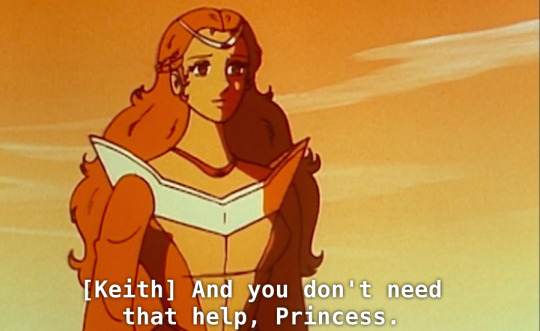
But now, let’s talk about the only other time when I think Keith and Allura have a significant moment, because I do think it hints at love–but in a different direction. When everyone tries to comfort Keith at the end of the first episode, I think the other paladins really missed the mark.
Lance, Pidge, Hunk–the rest of them talk about what Shiro means to them, and they do so in a way that’s very impersonal–he’s my hero, he’s a legend, he was a mentor. They all talk about Shirogane the paladin and star pilot, not Takashi the person. And none of them ever mention or stop to think about how Keith feels. If they were really trying to console him, they should’ve focused on that.

As someone who’s also suffered great loss, Allura understands this more than anyone. She’s the only one who actually says why Shiro’s so important to Keith, the only one who really reaches out and gets through to him. Shiro’s loss was deeply personal, an ache that will never heal. She knows this, knows that to Keith, Shiro is simply “irreplaceable.”
And really, I think this moment was a heart-to-heart between the two of them, something that Keith really needed to hear. But it’s not about how Keith and Allura feel about each other, it’s Allura reaffirming that Shiro means the world to him. The conversation also isn’t private, it’s with friends, found family–which makes Allura seem more so part of that family rather than this just being about her and Keith. Compared to say–things like Kuron’s bedroom scene where the two are entirely alone and it feels much more intimate.
There are other factors that contribute to this of course, like the dark lighting, extreme closeups, framing, Kuron’s haggard appearance and the fact that they’re both dressed down to emphasize that they’re allowing themselves to be vulnerable, the setting, context, Keith being the only one allowed at his bedside, ect–all of which make it feel more romantic
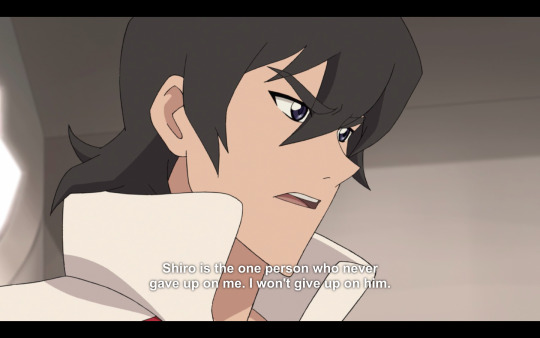
And in that sheith scene, again, Keith and Shiro reiterate how much they mean to each other. Allura and Keith never do this. And you know what? A character mourning the loss of someone they hold dear, someone they can’t move on from, and their friends coming together to talk them through it–it really gives you the sense Keith is mourning a lover. It’s a kind of intimate grief you usually see reserved for a love interest.
I think the way Keith was so indifferent to Allura’s inexperience flying Blue also came across as extremely cold and callous if they’re supposed to be love interests. Like, if you want there to be romantic chemistry and yet you have all these scenes where Keith is outright ignoring Allura when she’s in trouble, that just doesn’t sit right with me. Even when they first lose Allura, Hunk says he’s going to get her, and Keith is mad about it. He literally groans and just tells the others to keep up. Allura’s struggling on her first day as a paladin, and Keith’s just annoyed with her. Compare this with any time Shiro’s in trouble, and you’ll notice an immediate difference. Shiro’s safety always comes before the mission for Keith, but he doesn’t really afford Allura or anyone else that luxury. And it’s just one of the many reasons why Keith and Shiro’s dynamic strikes me as romantic
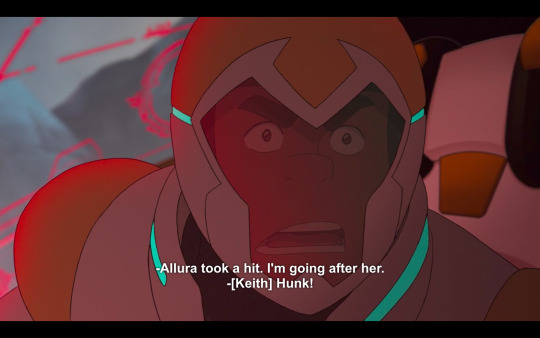

So again, Keith’s not the one who’s there for Allura when she needs them, but the other paladins are. To see Keith actually lose sight of the safety of his team over chasing Lotor–and to be entirely dismissive of Allura’s safety especially–again, it doesn’t read as a potential couple to me

I think Allura and Lance however do have a lot of chemistry in season 3, and I feel like a lot of their scenes read as something along the lines of buildup to a future relationship. Lance is the one who Allura has a heart-to-heart with about her very personal connection to the Red lion and what it means to her–that easily could have been a conversation she had with Keith, but it wasn’t. And it’s Lance, not Keith, who vows to carry on Alfor’s legacy and not let him down–another Altean King in the making maybe? (And I mean by marriage of course, not the popular Altean Lance fanon). And “If I had to lose Blue to someone, I’m glad it was you,” sure seemed pretty romantic. Not to mention how he’s the one that really welcomes Allura to the team, not Keith

Allura also tells Lance what the significance of her pink armor is, which again, shows just how much she trusts him. She’s also the one who really encourages Lance to be the Red paladin and tell him just how important he is to the team. Then you have other little things here and there, like Allura stoping to ask herself What would Lance do? when What would Keith do? could’ve also been possible, given that he’s there leader and it makes sense to look to him for guidance. She acknowledges that Lance is a natural and clearly cares about him throughout season 3. And Lance was the one who really noticed how amazing Allura is when she’s fighting and he never bothers her with annoying flirting. If anyone was setup to be with Allura honestly, I think it’s Lance.
Going back to sheith, I’ve already talked about it so much already which is why this was a bit more on ka/llura, but basically my point is–sheith was built up like a romantic relationship from season 1 until season 3, ka/llura was not.
291 notes
·
View notes
Text
More Peaks Returns
It appears to me that Lynch is inserting some heavy commentary about societal behavior, the most obvious being the “fix your hearts or die” assertion about Denise Bryson’s transition. Another clear instance is the decay of social norms exemplified by the elaborate unfolding drug storyline. Several characters are being depicted wheeling and using drugs, and Lynch-Frost are telling an updated version in P5 of the illicit activity, how it has already effected Shelly’s daughter and husband, a continuing cycle of abuse and dysfunction still playing out.
I also believe Sherrif Frank Truman is a personification of Lynch’s transcendental meditation wisdom. Harry Truman’s brother is an honest character and to be trusted absolutely as a transparent truth teller. His name is the very meaning of honest, open, direct — Frank. His earnestness is exemplified when Doris Truman shows up at station spouting domestic house anxieties while Truman remains sitting, saying nothing at all throughout. It reads like a subtle teaching of how not to respond to anxious energy, worry and dis-ease — do not engage with it. This is classic buddhism — how everything arises from conditions, has a presence in the moment, then decays when conditions change — thus, everything changes, no reason to get wrapped in unnecessary entanglements, including the wrath of someone overreacting to common occurrence. See impermanence.
A Twin Peaks Podcast: A Podcast About Twin Peaks and Deer Meadow Radio are two of the better podcasts on The Return worthy of listening.
Random
Richard Horne — is this the first clue from ?????’s prophetic clues, “Watch for Richard… and Lynda.”
Richard Horne passes bribe money in a pack of Morley cigarettes… the brand of choice for Cigarette Smoking Man.
Salesman asking Lucy at desk for Sheriff Truman, Lucy asks which one? An in-joke allusion to another Sheriff Truman duality, Harry-Frank.
There was a bonsai plant on side table next to Sam sitting on couch in P1, which was also featured in original series’ S2 Windom Earle arch.
Marjorie Green carries her dog, Armstrong, a small Mexican Chihuahua.
Here’s a good article on the absence of Badalamenti music thus far in The Return.
No white dot in Bob Cooper's pupil/eye — life-less .
End of P4 before Bang Bang Bar is blue rose scene… shot in blue tint
Owl cookie jar on counter behind Dougie Cooper during breakfast
A lot of Lynch visuals hearkens to Eraserhead, coming full circle in his cinematic journey of a master’s craft.
On Jun 4, 2017, at 9:59 AM, Dom wrote: I think I made a nice discovery which I posted on Reddit (Fred_Truax).
I cannot find Fred[undescore]Truax in any reddit search — author:Fred_Truax yields nothing. I’m not a Reddit reader, the whole thing is a fuck show of multi-threaded comments. It hurts my brain to go there. I can tolerate direct links, though.…
Reading Best Fan Theories at Indiewire, one theory suggests Wally Brando is really dead (source: Reddit /u/chblank), that “Lucy and Andy [are] in denial and shock … of losing her only son as a child.… Sheriff [Frank] Truman may have hired an actor to play their son — a role that fake Wally took literally, considering his “The Wild One” getup and bad “Godfather” impersonation. This could also explain why Wally Brando makes a point of telling his parents that they can convert his childhood bedroom into a study, as a way to help them move on and let go of the past.”
Same article posits that the headless body in the librarian’s apartment belongs to Major Briggs (source: Reddit /u/billy_yllib11). “Although the decapitated head belongs to the dead woman, there is a grotesquely contorted body detached underneath, one that comes from an unknown person. Later, we learn the forensics team has a match on the body, but they need military clearance to unlock its identity. Perhaps the kind of clearance that Major Briggs once had when he was working on top secret projects for the government? Of course, if the decapitated body does in fact belong to Major Briggs, it would also contextualize the appearance of his disembodied head, which floated in space at the beginning of [P3].” …But how does Dougie Cooper’s ring get in stomach?
I also noticed something strange about those two scenes:
In episode one when Sam leaves the Glass Box room the second time to go into the lobby to see Tracey (and the security guard is NOT there) he leaves the small black box of video cards on the step ladder near one of the cameras. The black box remains on the step ladder for the entire scene almost. The box disappears for a moment when they start to take off their clothes, then is back on the step ladder right before they are attacked.
However in episode 2 when Cooper enters the Glass Box and we think Sam is in the Lobby with Tracey, you can clearly see the black box of video cards and his pen on the side table next to the small couch he sits on.
Did Cooper enter this room at a different time they what it appears to be? Is Cooper in a second identical room? I just think its weird the black box is in two different locations in what appears to be the same time?
What do you guys think?
I’m beginning to understand these time shifts as backward dimension bleeding into forward dimension. BOB Cooper begins “‘yrev' very good to see you again old friend” to Gordon Cole when they first see each other again (P4). Relatedly, there’s fervent speculation that Sonny Jim blinks backwards while in back seat of car when Dougie Cooper notices Sonny and sheds a tear (P5).
Backward-forward are the two directions in which one can enter-exit the Black Lodge, shown to us in Classic Peaks and FWWM. Now we’re seeing vertical up-down direction to enter into-exit out of the Lodge, exhibited by the sudden vertical floor vibration as the Arm's doppelgänger appears and Cooper falls down through floor. Or Laura pulled up off the floor screaming into oblivion, as well as the ghostly pirate-like figure in a jail cell floating up into thin air.
Backwards is a reality dimension different from forward (as normal) dimension. P3 glitchy quick backward-forward movement when Cooper lands into hub in space and interacts with eyes sown shut woman, a reality between the two dimensions (?), existing on the threshold — Dweller on the Threshold?
This new movement is depicted in the opening title sequence when the wavy-flowing red curtains cross fade to chevron pattern panning across floor, seemingly tracking the camera in a circle. I love the new title sequence opening drone shot over the falls, hangs on waterfall from above, dissolves to a slight CU of waterfall spray, then segues to the rhythmic curtains — an abstract version of the classic series opening dissolves from the waterfalls to a flowing river.
I am also convinced that Laura is going to leave the Black Lodge somehow and venture into the real world.
On Jun 4, 2017, at 3:01 PM, Erik wrote: Dom, did you see the Tweet I sent your way? with the info that the Casino Cooper goes to in Vegas was actually filmed in Commerce, CA. (they have actual casinos there) about 35 miles from my house. judge for yourself...
<PHOTO>
Dudes, when we finally graduate from trekking back to Peaks (WA), we have to eat at The Roadhouse Restaurant & Inn. Can’t believe we overlooked this. We’ve done the original Mar-T Cafe (plus the deplorably named and renovated Twede’s) and Fall City Grill (Haps Diner), we gotta do the Roudhouse, regardless if it’s only the exterior.
It will be interesting to see if the green revolving doors that Cooper has trouble with are actually here as well. So I guess we know where you might stay next time you come out here to Pin Peaks Locations. I thought it would even be fun to get a room and watch the season finale there, then go down to the gaming floor and "Helllloooooo!"
As far as the actual plot...
I have come upon no clues or conclusions at all. It is very dense material. What little I have read online is complex and sometimes implausable, but who am I to say? I like the scene when Douggie is getting dressed and Sonny Boy … comes out and they make a lot of visual and action references to the Season 2 opening scene. What does it mean? No clue.
In P4 Cooper is Home — Dougie Cooper says aloud, “Home.” This is symbolized as a birthday with balloons in the kitchen behind him. Similar balloon shapes appear when he is dropped off at outside of work building, when Cooper mimics statue pointing gun. I’m thinking Dougie is the character Lynch-Frost are using to teach the viewer how to assimilate and understand the Twin Peaks world view. From Dougie's point of view, he seems to know little or nothing about the world. He’s in process of making sense of it, and now that he's starting from home, we should follow along and we'll learn together. As viewers, we’re putting some faith in the storyline will resolve eventually, even if only in part. During the following scene when Gordon meets Denise Bryson in her office, she says, "I trust you Gordon." We should trust Lynch.… But how does this all jive with ??????’s “You are far from home”?
Gonna review a bit and start my edible regimen, no cherry pie this week, coffee and donuts YES. Last time, I cracked a beer when it started, had a full bowl next to the food. I did not touch either of them for 2 hours straight. Completely forgot about them actually. Totally engaged. Only ate pie, donuts and coffee... I'll have messenger open at 5:30PM est standing by.
On Jun 7, 2017, at 4:38 PM, Dom wrote: So who do you think are Richard Horne's parents? Audrey and Cooper? Audrey and Jack? Ben and his wife? Jerry and some random chick?
Definitely not the son of Cooper and Audrey. Cooper’s been in the Lodge and he shot Audrey down at every turn before meeting Annie. The other possibilities are intriguing and any of them are plausible. Audrey and Jack — do you mean John Justice Wheeler? Richard Horne seems to be 25 years old and got hooked up with the wrong crowd, that’s easy to do these days. Ben and his wife? Maybe, they could have reconciled their stormy marriage. Ben does seem to have remained steadfast in earnest goodness since emerging from his civil war. Perhaps Richard Horne is Jerry's son that steals his father’s weed to sell. Or maybe Jerry is a big kahuna now in the drug trade? I doubt it. Regardless who the parents are, Richard is a Bobby Peru/Leo Johnson mutt that fits right into Lynch’s social commentary of prevalent drug use still running amok in the world.
Great to see Mike return too.
Would be cool if Mike and Bobby had a beer together at The Roadhouse, catch up a bit with each other — Bobby asking Mike, “Do you remember Laura Palmer?…” I wonder how Bobby will act around Shelly?
I also have another prediction;
The person Gordon wants to look at Cooper will be Diane play by Laura Dern. That's not much of a shock but...
Remember when Albert says he doesn't know where she lives, but knows where she drinks...
My prediction is that they will find Diane (Laura Dern) in that bar we went to in Los Angeles that night I arrived on my last visit. It has all of the nice woodwork and we had to walk down a flight of stairs to enter.
I have resisted right from the outset of Laura Dern cast as Diane. I don’t really want Diane’s identity to be revealed, would much rather have her remain anonymous on the other side of Cooper’s dictaphone. I know there’s speculation and makes sense that Diane will appear as Dern, but this way too obvious, especially after all Lynch has presented us thus far — even considering how close Dern is to Lynch. But still, I hope it isn’t so.…
I also find it weird that Agent Tammy Preston in episode 4 had to ask Albert who Phillip Jeffries is. She learned about his existence in the Secret history of Twin Peaks as she was the agent in charge of examining the dossier. She even added her own notes about him.
That is awesome about the Casino. Next time I come to Los Angeles, I am so game to go play some slots. HELLO O OOO OOOO!
1 note
·
View note
Photo
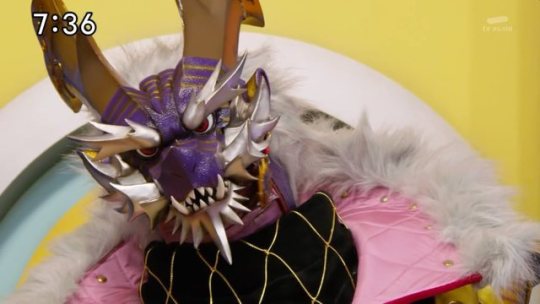
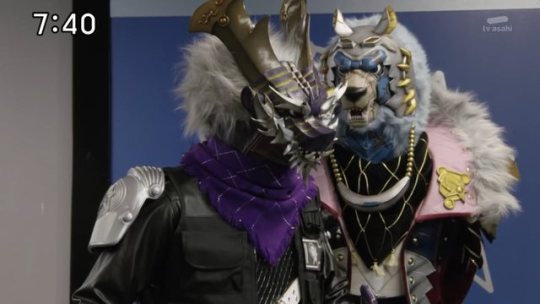
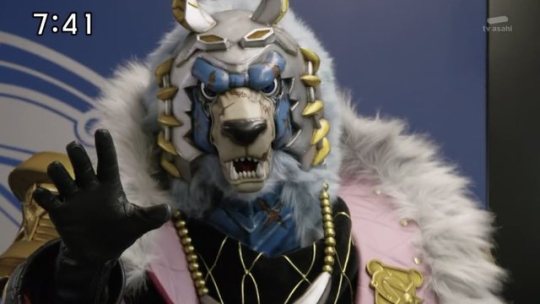
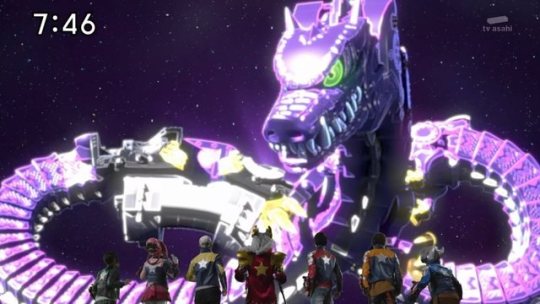
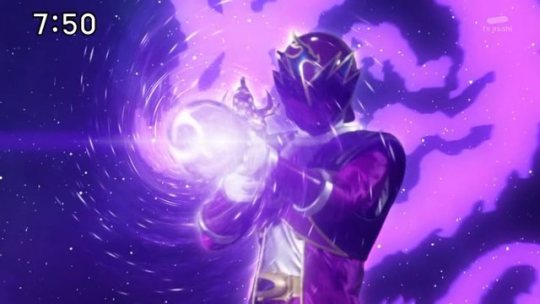

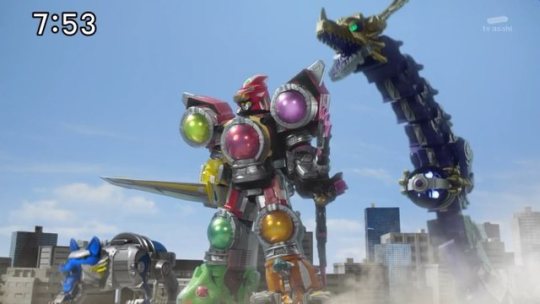
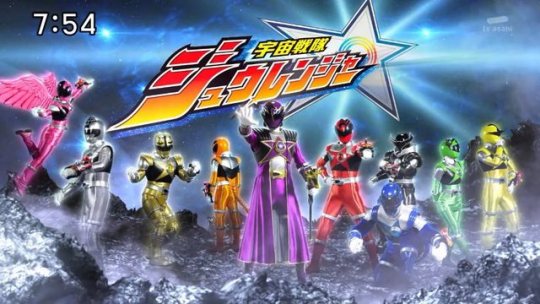
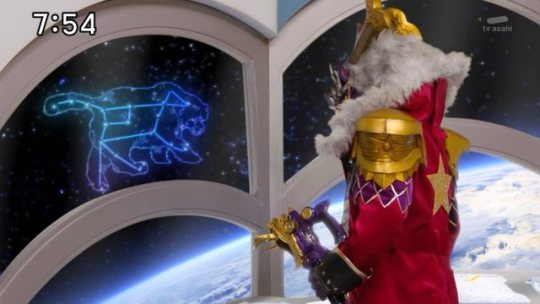
The Dragon's Dilemma!!! For a show with a direct reference to number 9, Kyuranger uses its 9th episode to extend beyond that number instead! XD
- Surprise, surprise! Eventhough Draco Violet made quite an entrance last week, his bravado gets cut short because... his suit has a time limit. No wonder the Draco Kyu Globe looked rather, bland, right? Of course, his main goal is merely to distract Ikagen and Madako long enough for Team Spada to get Team Stinger to safety. Correction, not exactly Team Spada, when Spada himself stays behind just in time to help Commander Xiao, and... gets abducted instead. Ouch. - Bruised and battered Team Balance catches up on this development via teleconference. It might take some time for them to return, so nice excuse to let them off the team! Champ being sarcastic, and Xiao playing janken-kyu (rock-paper-globe) with Kotarou while everyone is waiting for his explanation, are a sight for sore eyes,eh? LOL. Well, here comes the twist. Xiao is NOT a Kyuranger, never was, never has been. Even Ikagen and Madako call him "a pale imitation" while sharing the story to their captive. Which is a convenient way to make Spada up to date. But who or what is Draco Violet, then? - There are Change Kyu Globe, which the legendary Kyurangers have each. Draco however, is just a Skill Kyu Globe, similar to those auxilliary ones like Cancer, Pisces, etc. Xiao, who surprisingly looked really skinny without his Commander's coat, developed the Ryuu Tsueder to force a transformation. This occured before any of the legendary Kyurangers were discovered. So a prototype hero, if you will, which explains the limited use. I don't know about you, but this feels like a nod to "Denji Sentai Megaranger". - We also learn that the assassins wiped out most of Xiao comrades, thus explains why the Rebellions seems 'low' in personnel. What he doesn't reveal to the Kyurangers however, is the fact that during his youth, his rebellious attitude of ignoring orders (or insubordination, if you prefer fancy words), caused the unfortunate death of his Supreme Commander, Big Bear (VA: Kiyoyuki Yanada, who's currently voicing FBI Agent Camel in "Meitantei Conan"). Yes, Big Bear sacrificed himself to protect Xiao from Ikagen and Madako. Hence the hidden grudge aimed towards them. NOTE: Quick trivia! Do you know that the Draco constellation exist in the same family to... Ursa Major and Minor? Coincidence much? Not that it's important of course. After all, it's not like those constellations have anything to do with Big Bear or Kotarou Sakuma, right...? *wink* - Lucky, who seems to be getting more serious in each episode, thinks that he, Spada, and the others won't make the same mistake as Xiao. Unfortunately, it seems Xiao is more intent to repeat history in his tenacity to do the right thing. Vowing that he will not lose a single Kyuranger, he knocks Lucky down and heads out to do what it takes to save Sapada. This can't be good, right? I wonder if this means Spada's going to be the next Commander? Nope, that's not the case. Spada refuses to let Xiao fights alone (while spouting a cool cooking-related reason as well), and neither do the others. - Wow, I get the chills seeing Lucky scolding Xiao for fighting alone. When a loud and generally happy-go-lucky character can deliver a rousing speech, that says a lot, right? And further confirming my suspicion that Lucky works as a catalyst for Kyurangers, all Change Kyu Globes (including Team Balance's, who are still on route) light up and transfer their power to the Draco Kyu Globe. In a scene that easily reminds me of "Dragon Ball" (complete with wish-granting dialogue LOL), a massive violet dragon appears in front of them. We're witnessing the birth of a new Kyuranger! - The violet Draco Kyu Globe is complete now, no longer looking bland. And #10 The Dragon Ma-Star Draco Commander is officially born. Proof? He no longer has time limit, and has his own official roll call now. A cool action sequence is what follows. While Leo Red, Lupus Blue, and Aquila Pink teams up to handle Malistrate Metchatsuyo-Indaver; and Scorpius Orange, Chamaeleon Green, and Dorado Yellow deals with Malistrate Mutschatsuyo-Indaver; Draco Commander takes on Ikagen and Madako all by himself, outdoning both with impressive demonstration of the Ryuu Tsueder's rod/rifle modes... and cocky attitude. "Galaxy! Dragon Crash! Fire!". NOTE: With the convenient absence of Black, Gold, and Silver, this 7-colored formation is clearly a nod to "Ressha Sentai ToQger" Returns. Speaking of which, for a non-Anniversary season, Kyurange sure have so many nods to past teams, huh? - While Ikagen runs off with a piece of Madako's obliterated body, the Malistrates turn giant. Which means, yes, in a cool "Gosei Sentai Dairanger" nod, it's time for Draco Voyager to debut! Loving how the cockpit is held by the dragon's arms instead of plugging in the back like the others. On its own, his Voyager singlehandedly defeats both Malistrates easily. "Dragon Break!" FTW. And together with Kyuren-Oh and Lupus Voyager, the final Stardust Consumarz is destroyed. My goodness, this episode's mecha fight is magnificent. I just love it when the individual arsenals get to show off and kick some butts. I'm curious to why the BLUE Voyager is left out from Kyuren-Oh's formation though? Foreshadowing much? ;D - No moment to waste, time for a new Commander's order. A title rename into "Uchu Sentai Zyuranger" (which is itself a nod to "Zyuden Sentai Kyoryuger", of course)!!! Yep, that's NOT happening. Kotarou argues that with the same reason, he can become a Kyuranger too then. Perhaps... next week? LOL. Hmmm I wonder why the Ursa Major constellation lights up when Xiao is talking about Big Bear? Another most curious bit... *wink* NOTE: By the way, Commander Xiao is taking the ending dance spotlight with Raptor. But he's not part of that crowded group shot yet. Possibly... starting next week?
Overall: Kyuranger succeeded in giving its first two-parter, an equal if not better second half/conclusion. Great action scenes, fantastic story beats, and multiple nods to past Sentai seasons. Giving flaw or 'sin of the past' for its commanding officer was truly a nice touch. It allowed the show to explore a little backstory for him, but also turning him into a more relatable character. More importantly, Xiao was granted his true power via the 9 Change Kyu Globes, so his ascension to hero status never broke the symbolism of the title. In this case, the Kyurangers have proven why they are called 'Saviours of the Universe'. At the very least, they just saved Xiao's life so he could carry on with Big Bear's legacy... Next week: Orion's crashing down? Ghost of Brother Bear? And oh boy... it's a Blue Boy...
Episode 09 Score: 8,4 out of 10
Visit THIS LINK to view a continuously updated listing of the Kyutama / Kyu Globes. Last Updated: April 12th, 2017 - Version 14. (WARNING: It might contain spoilers for future episodes)
All images are screencaptured from the series, provided by the FanSubber Over-Time. "Uchu Sentai Kyuranger" is produced by TOEI, and airs every Sunday on TV-Asahi. Credits and copyrights belong to their respective owners.
7 notes
·
View notes